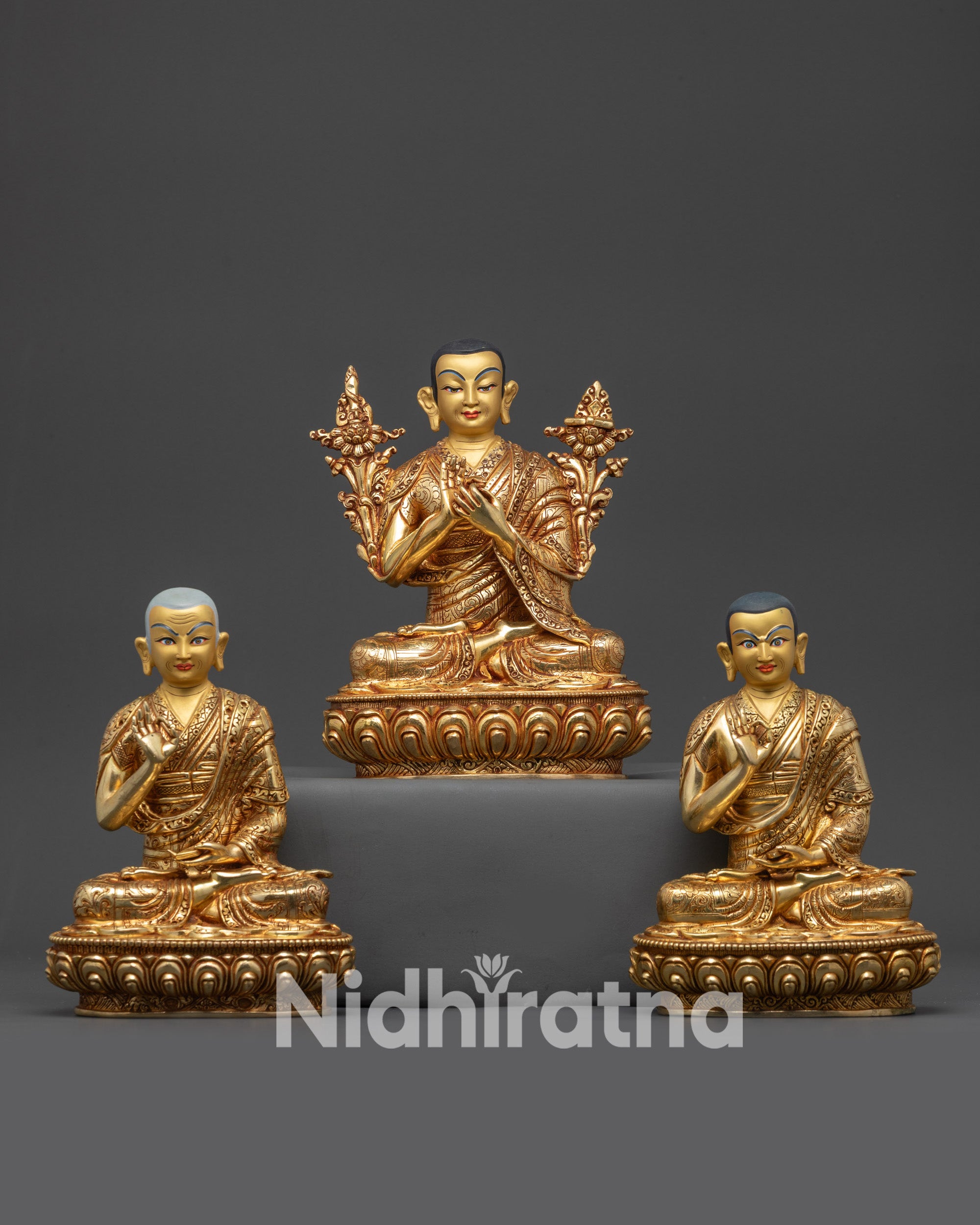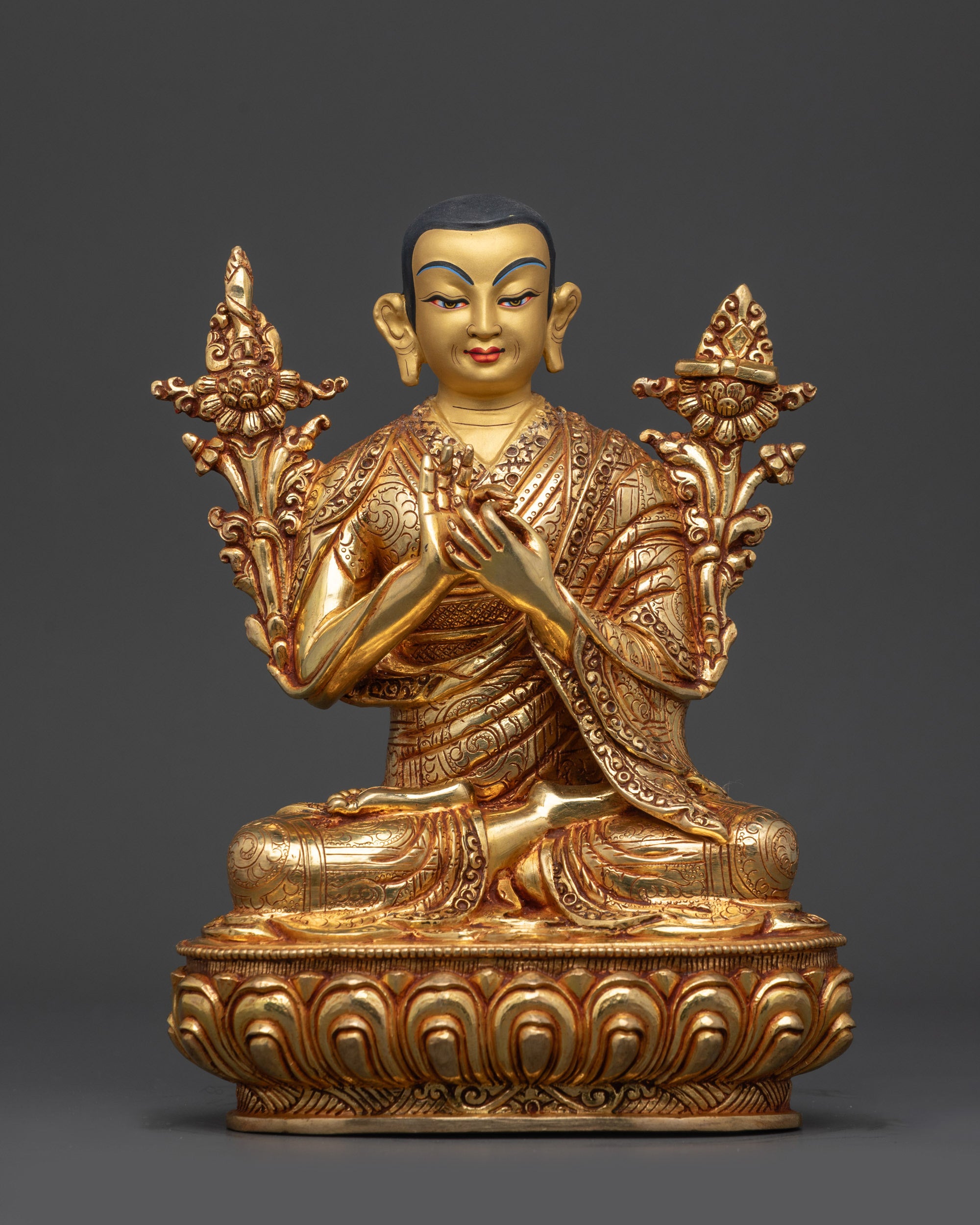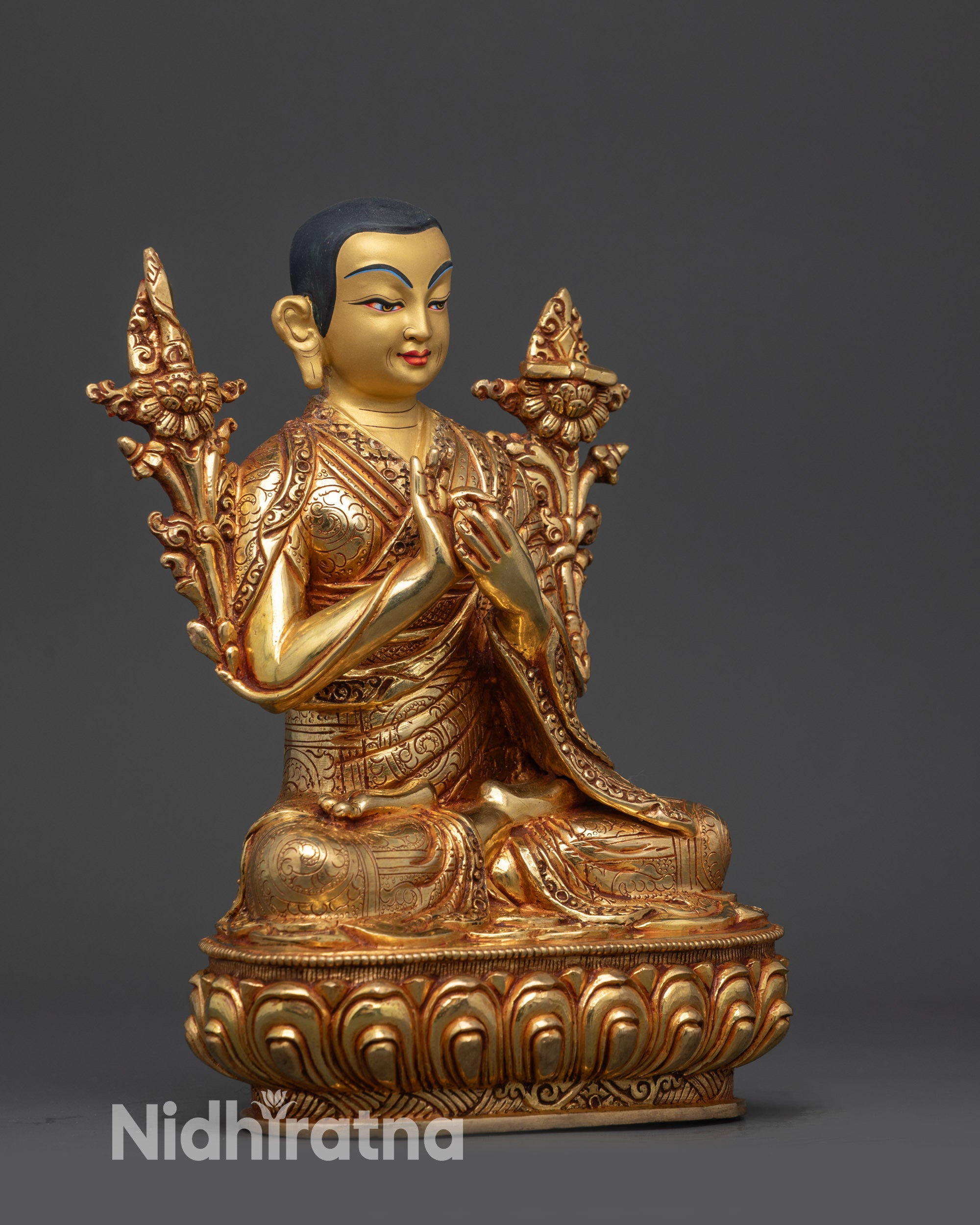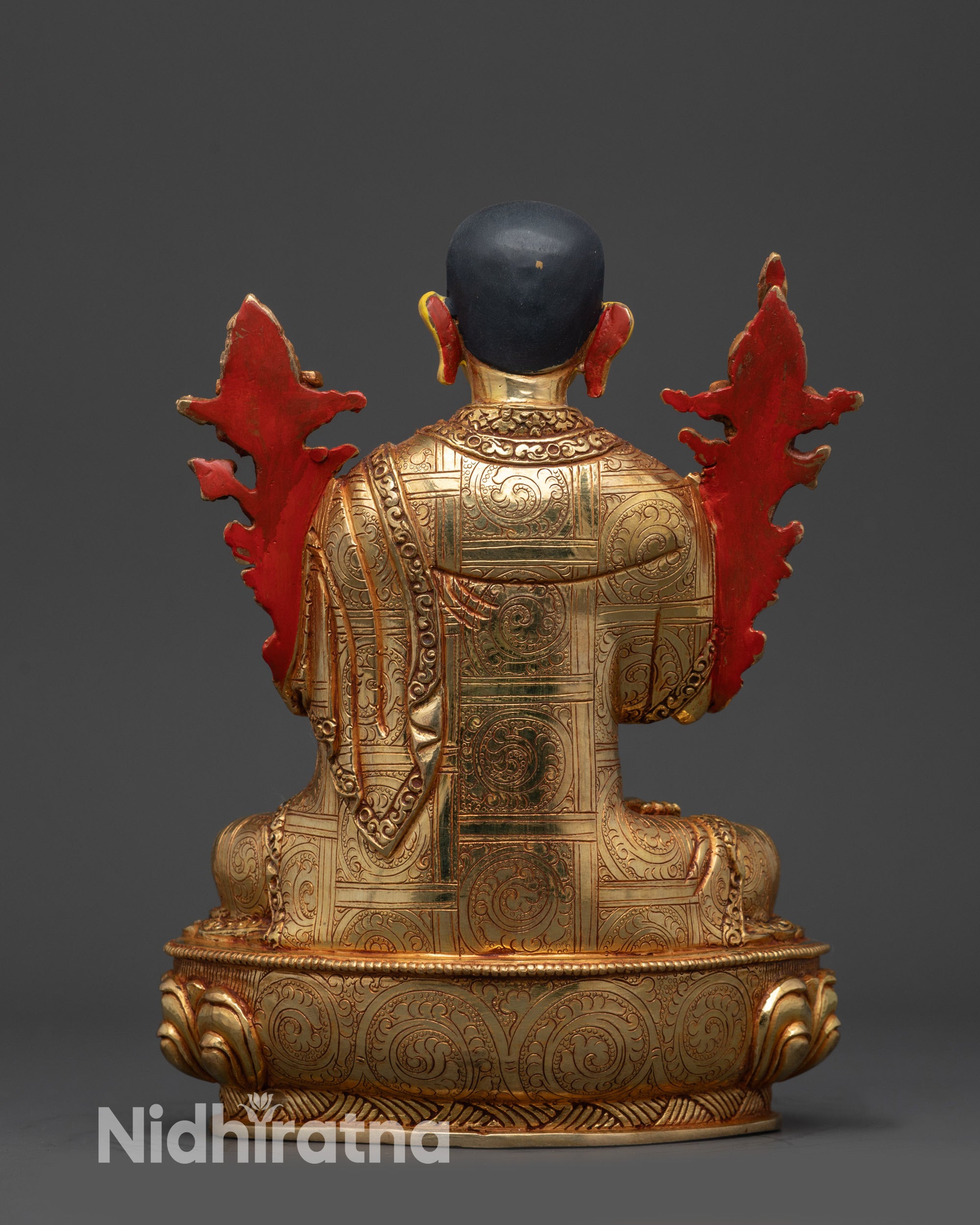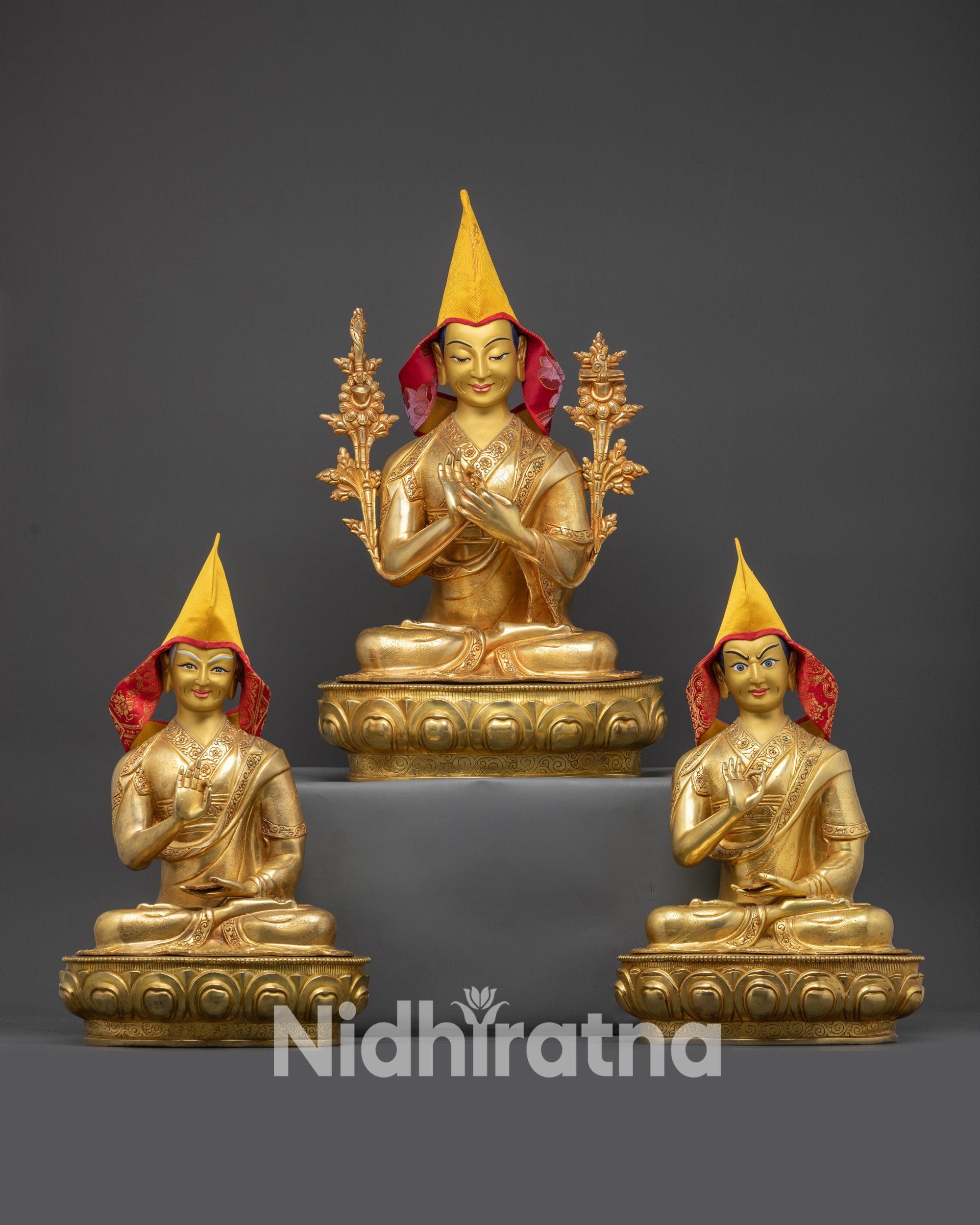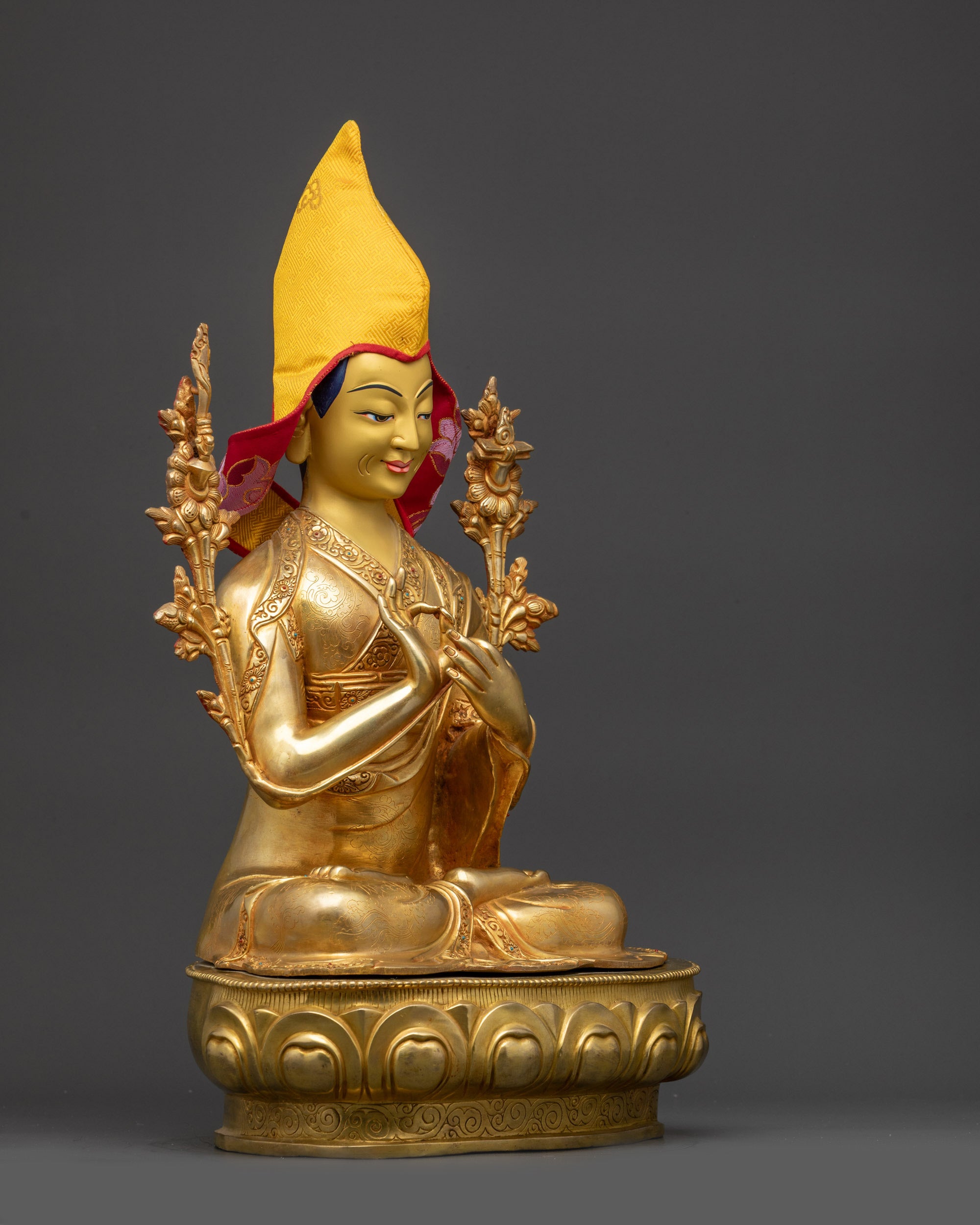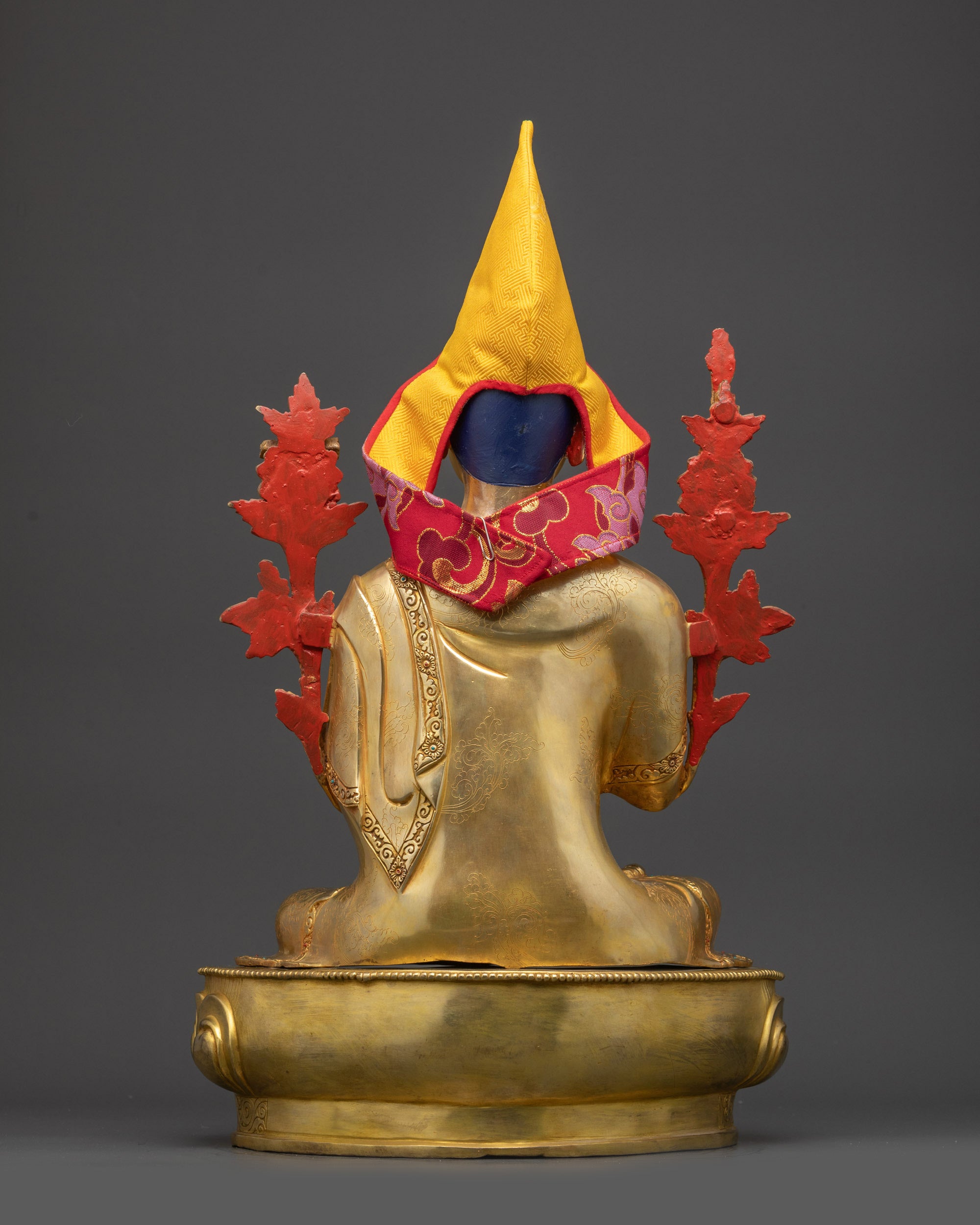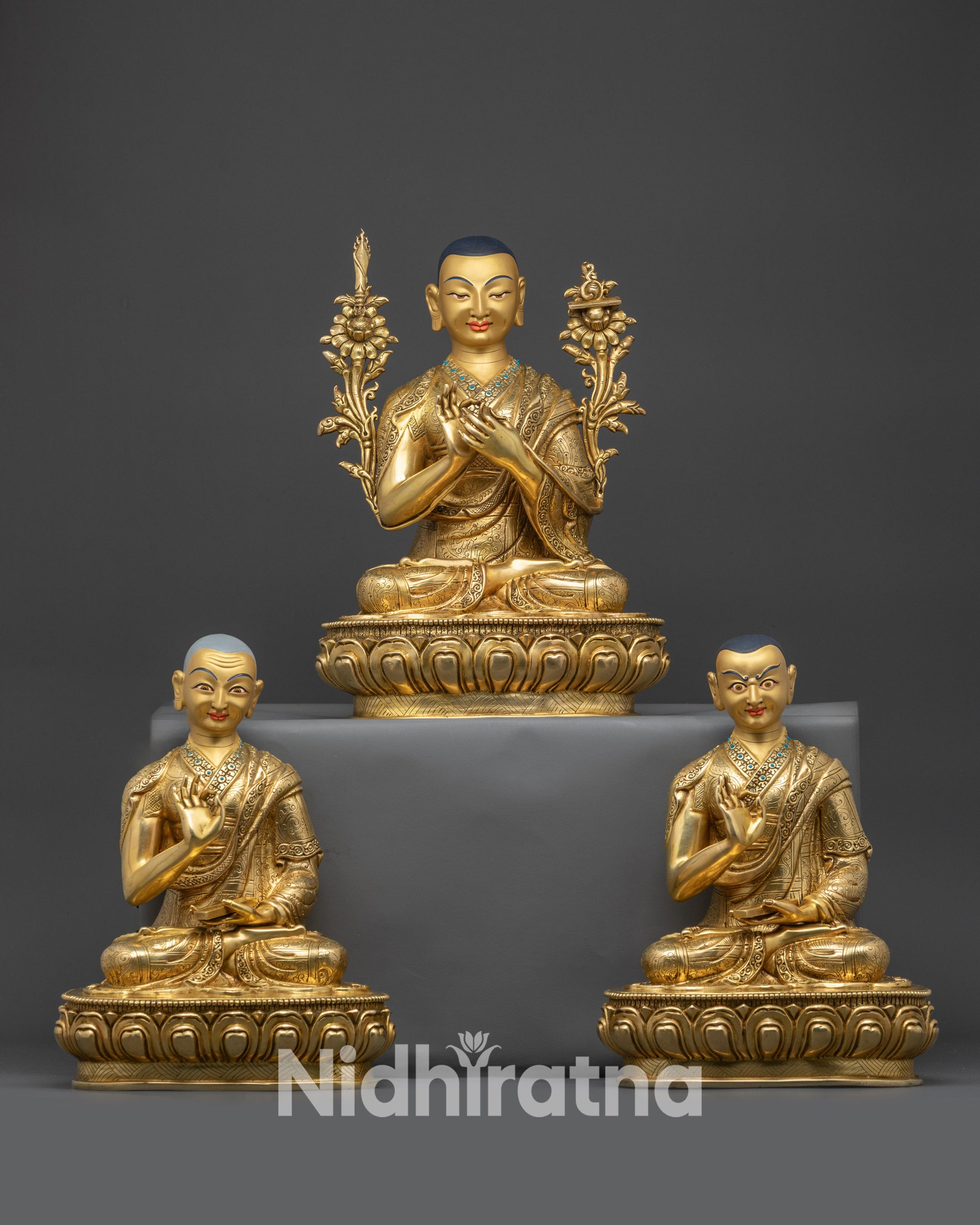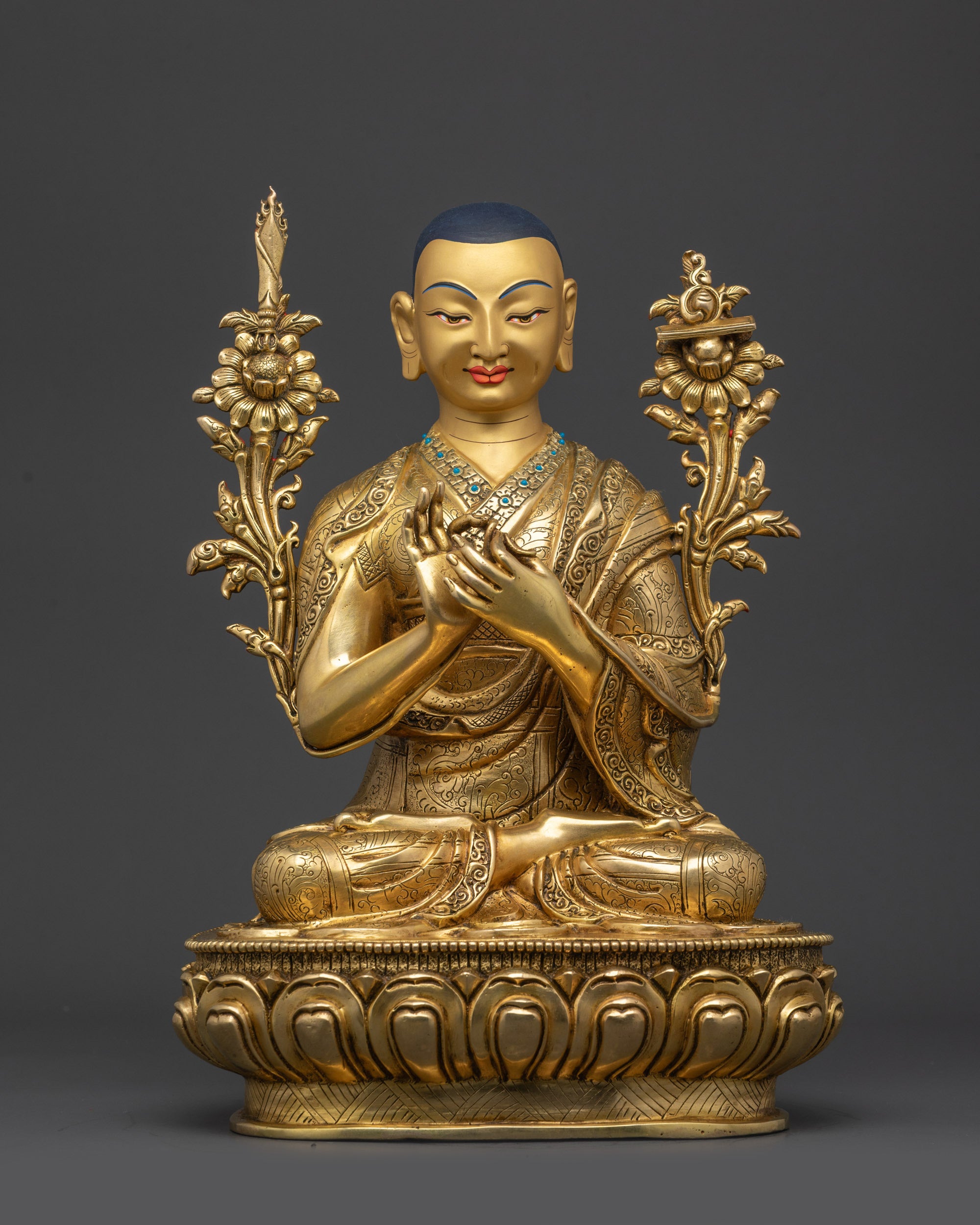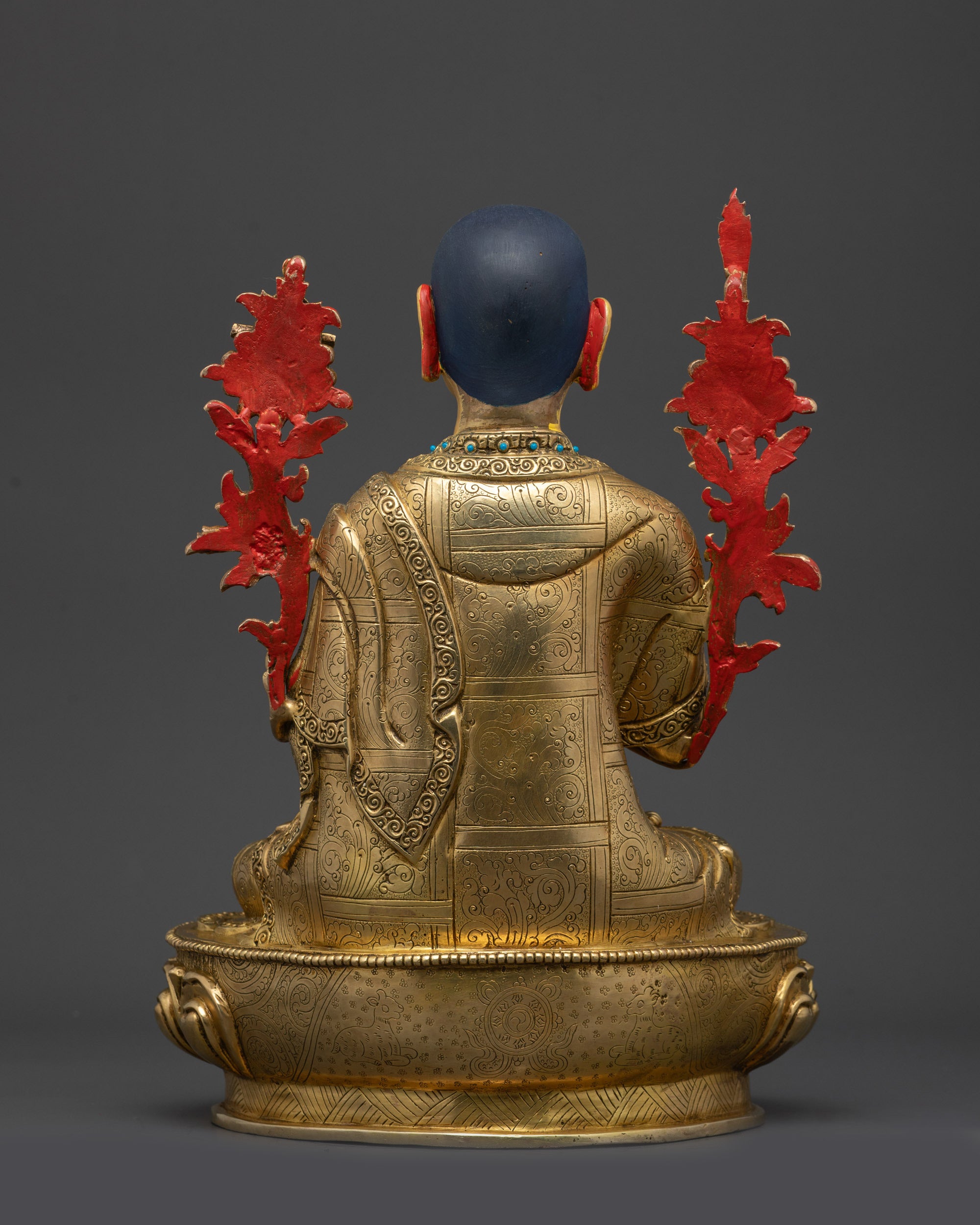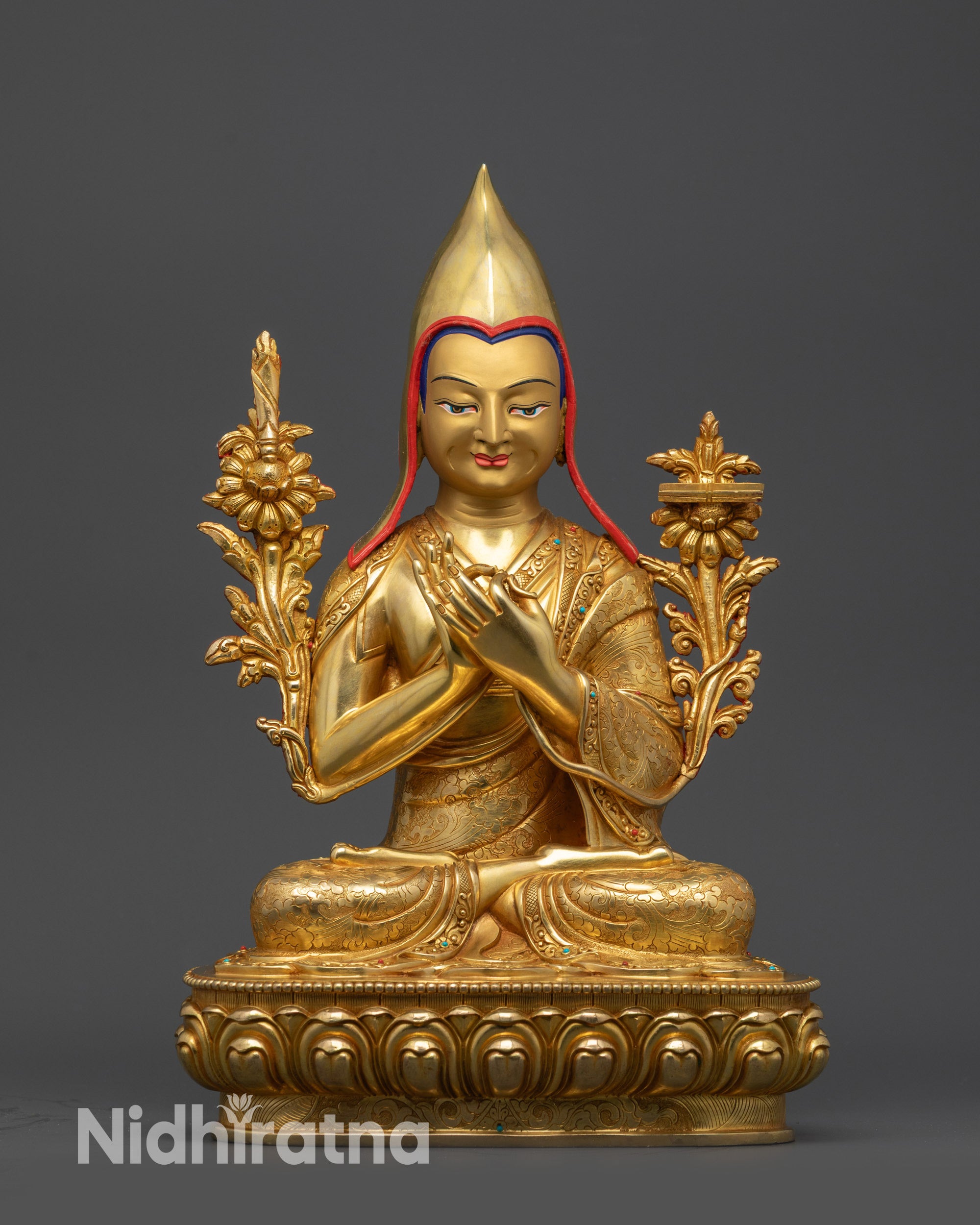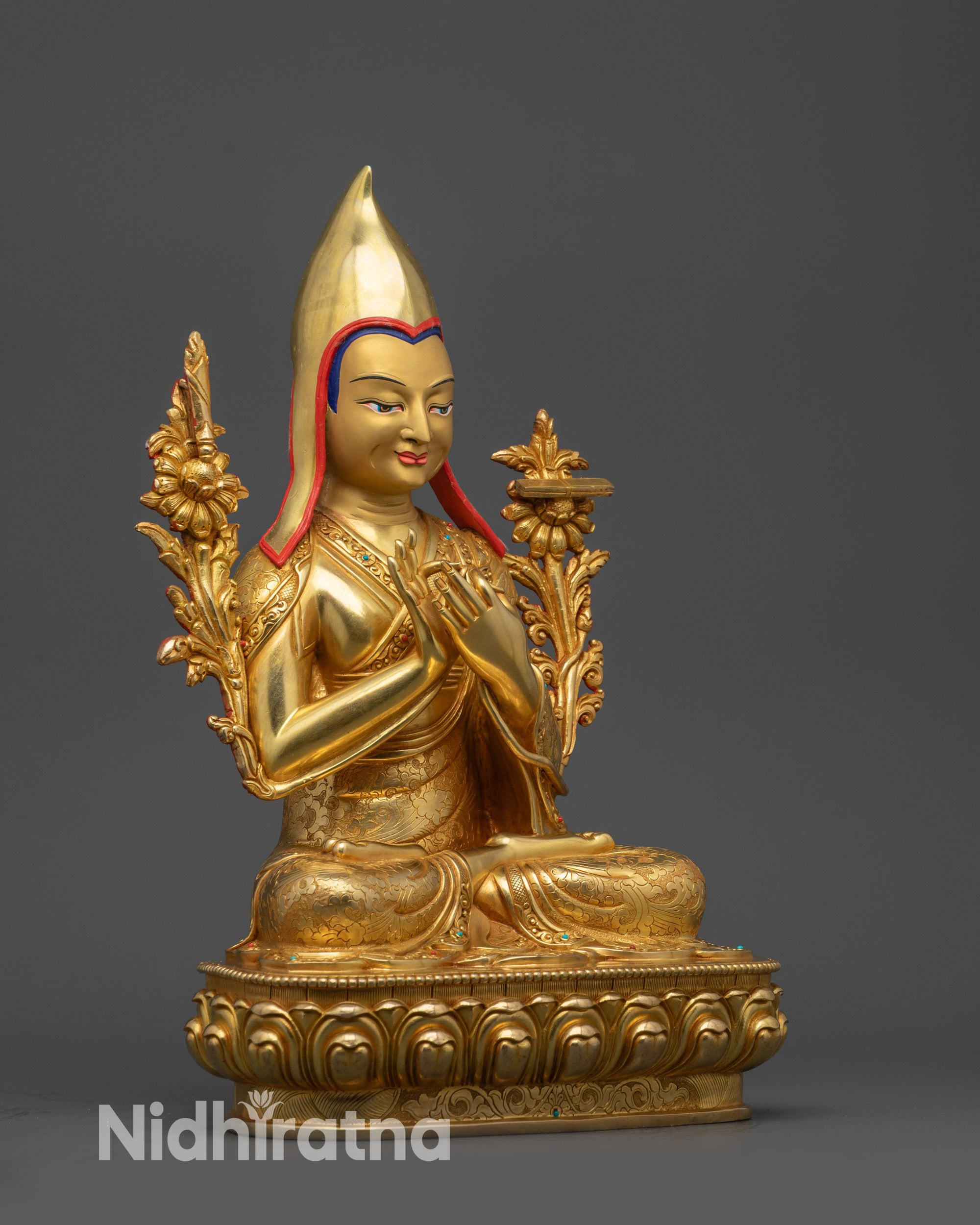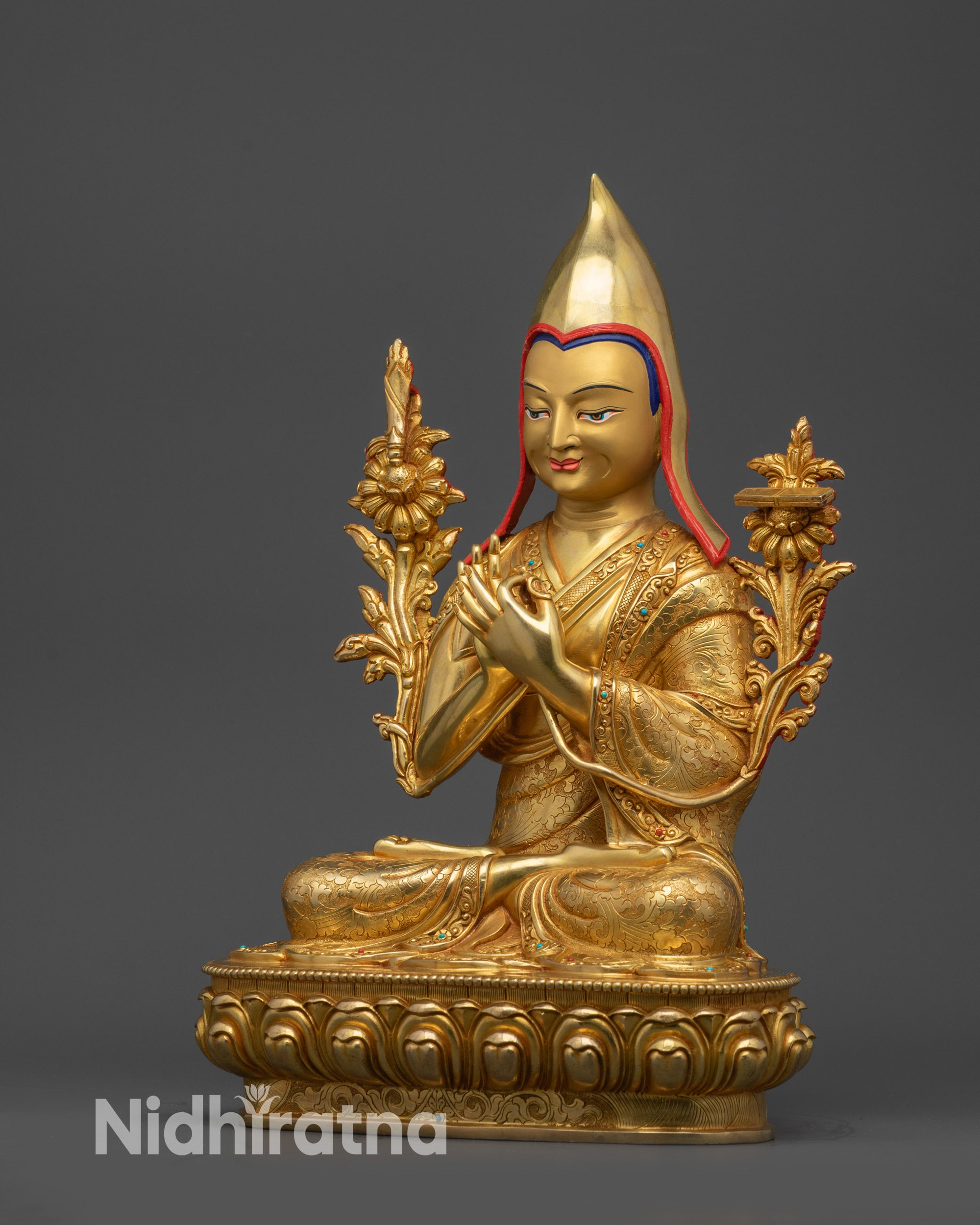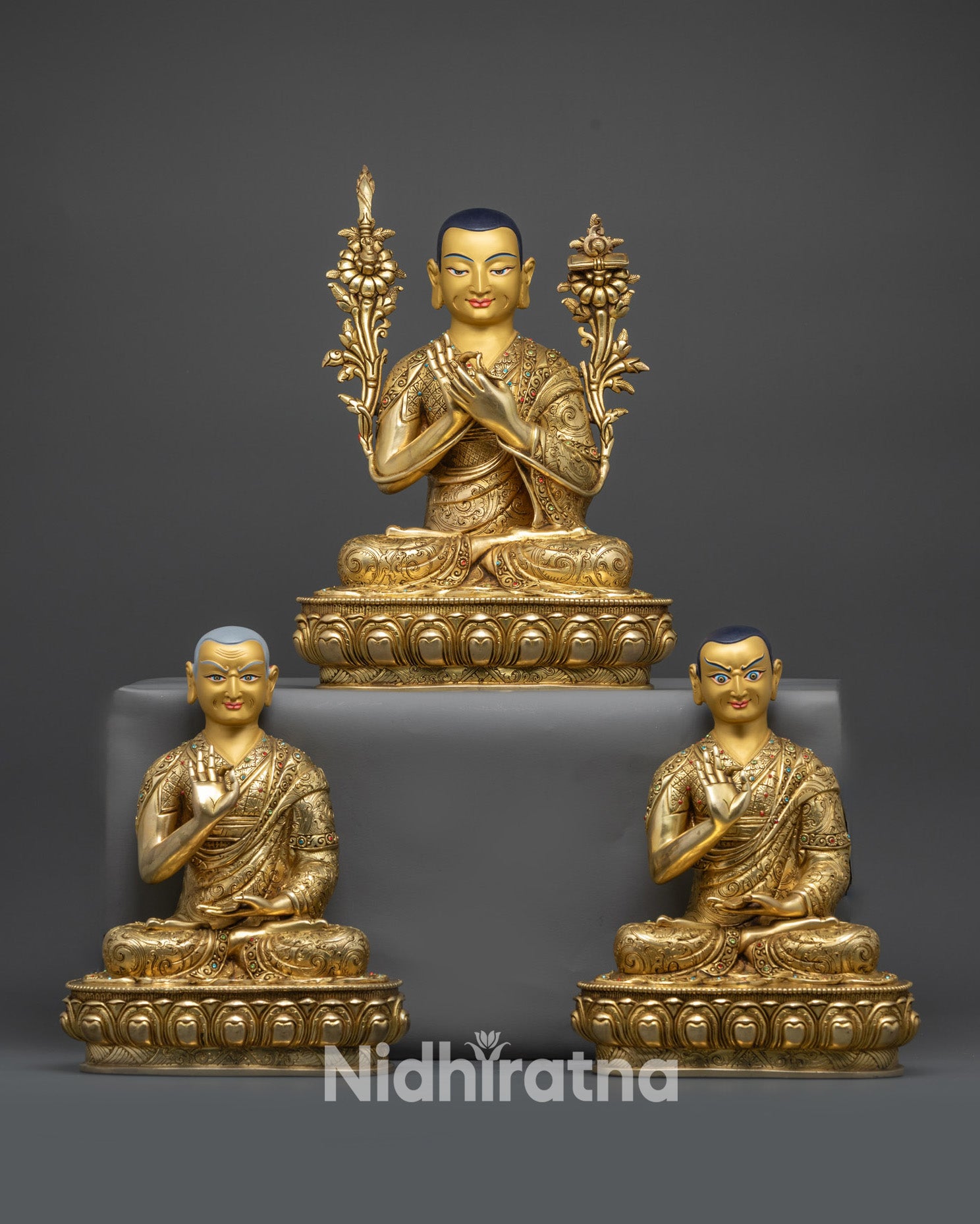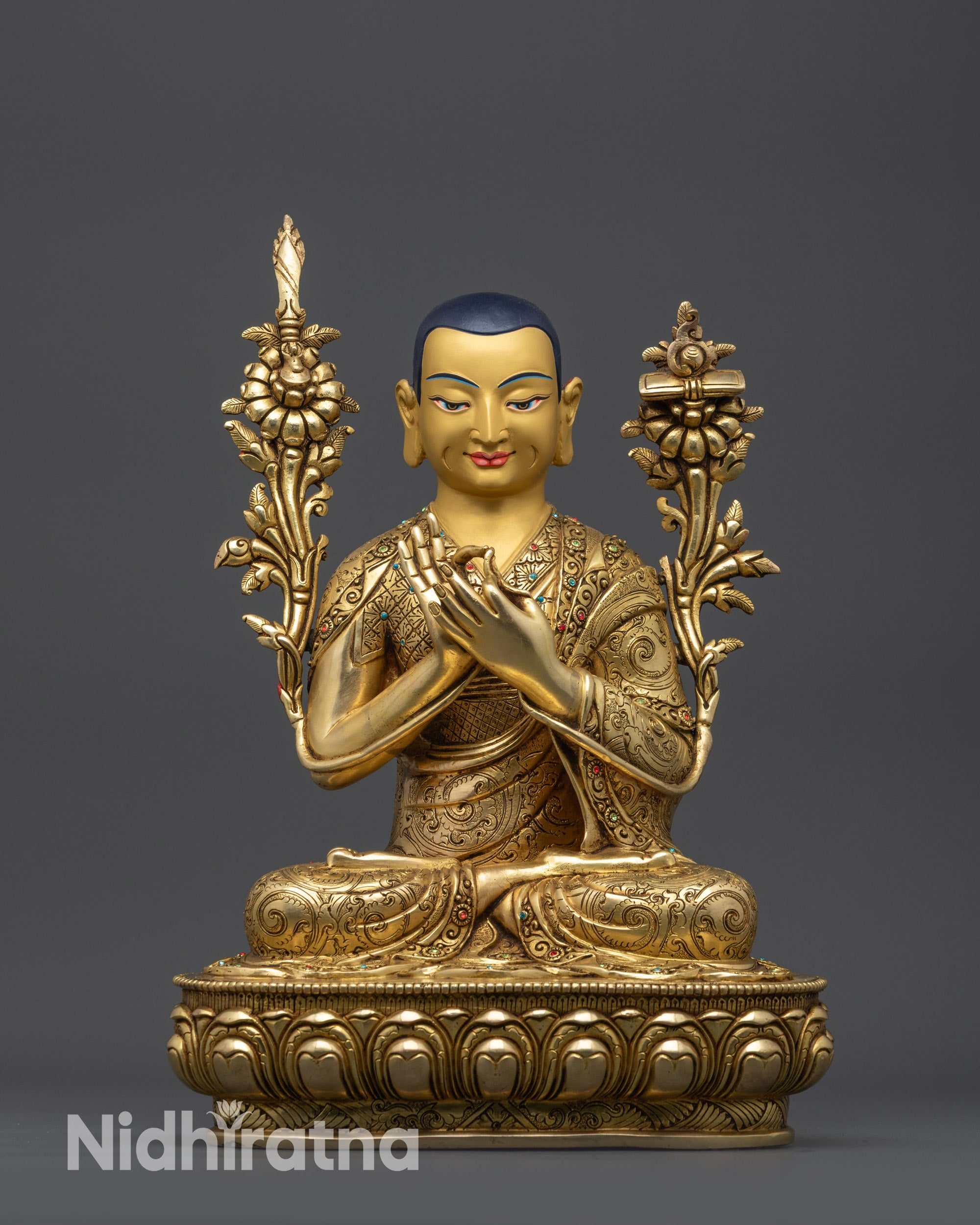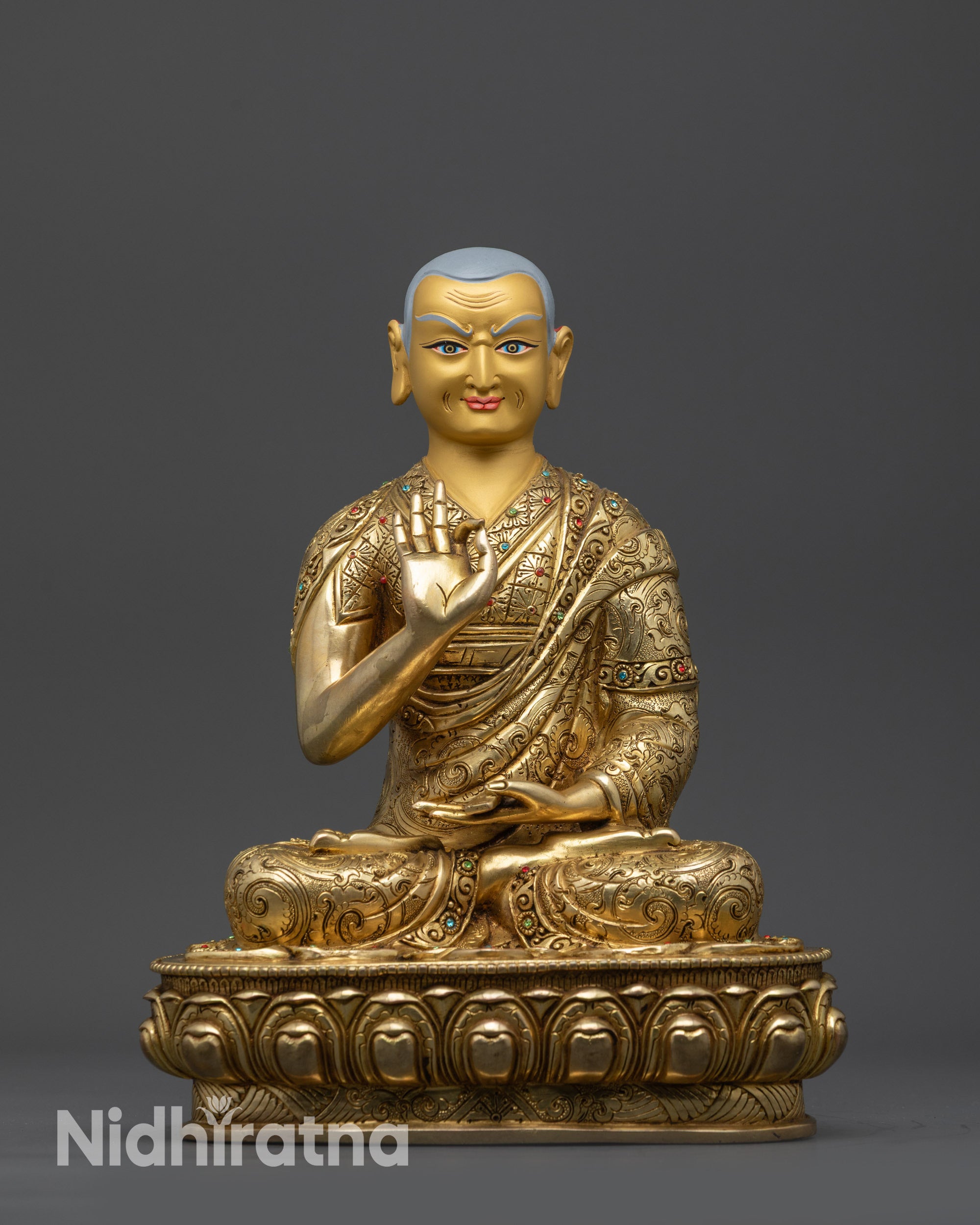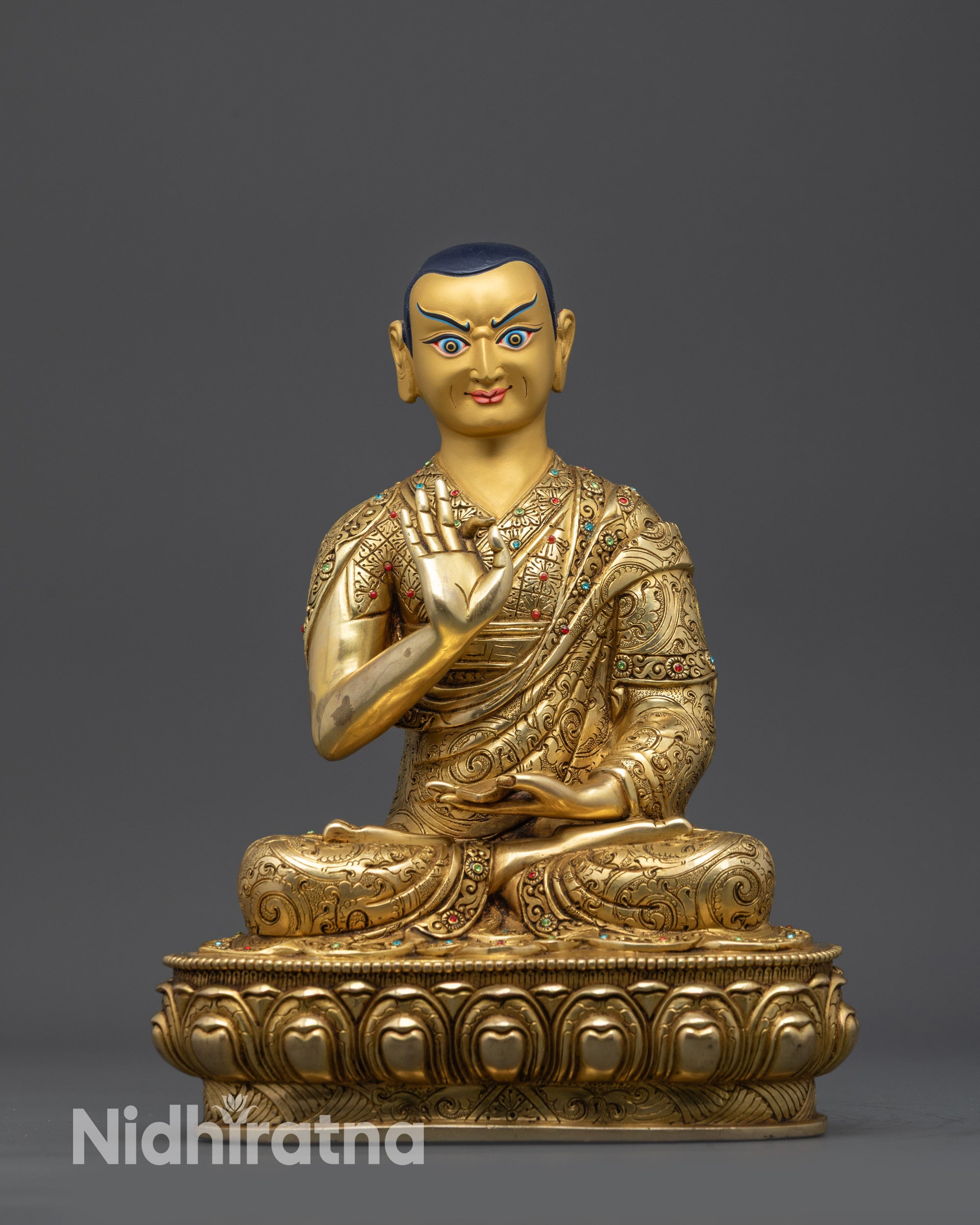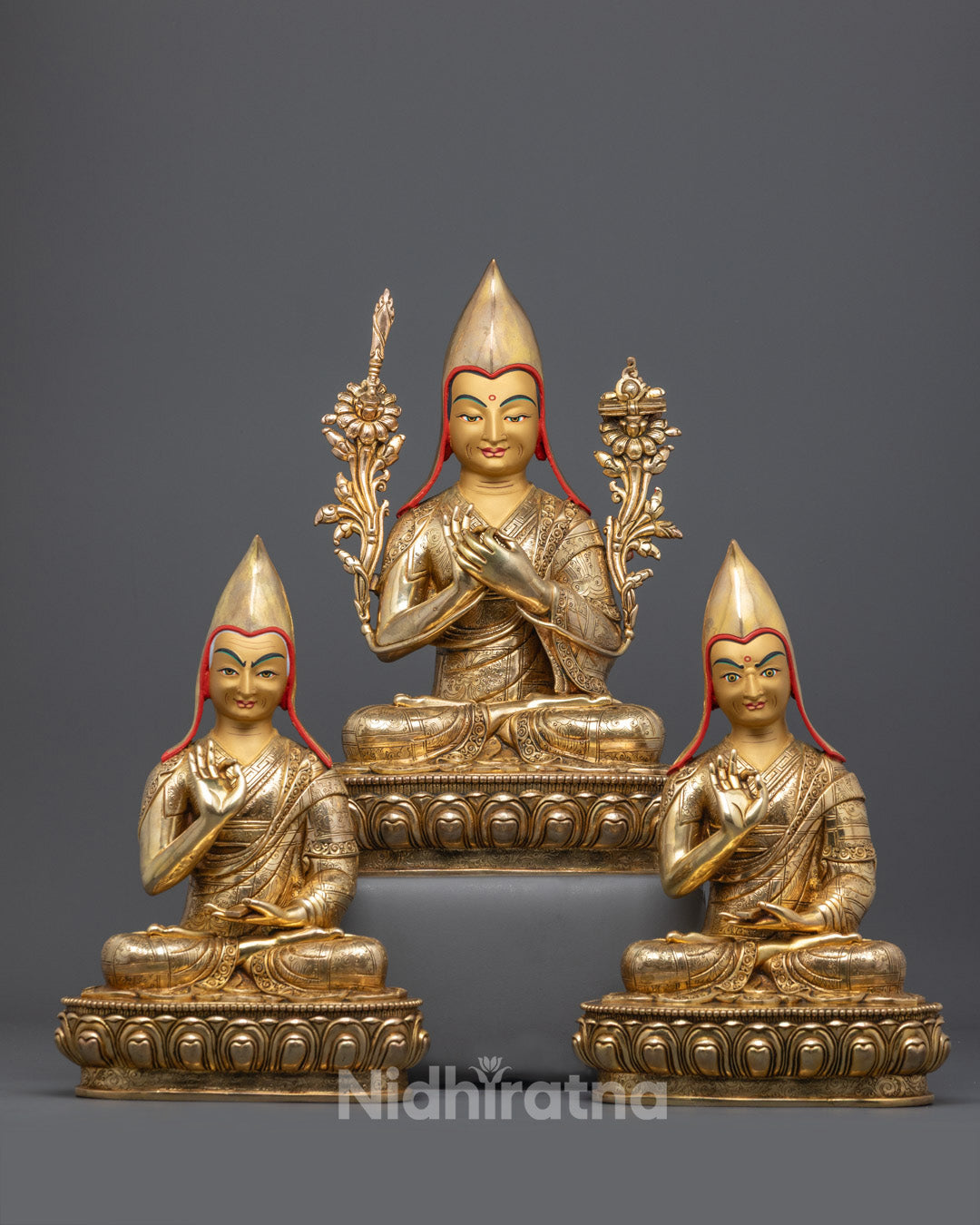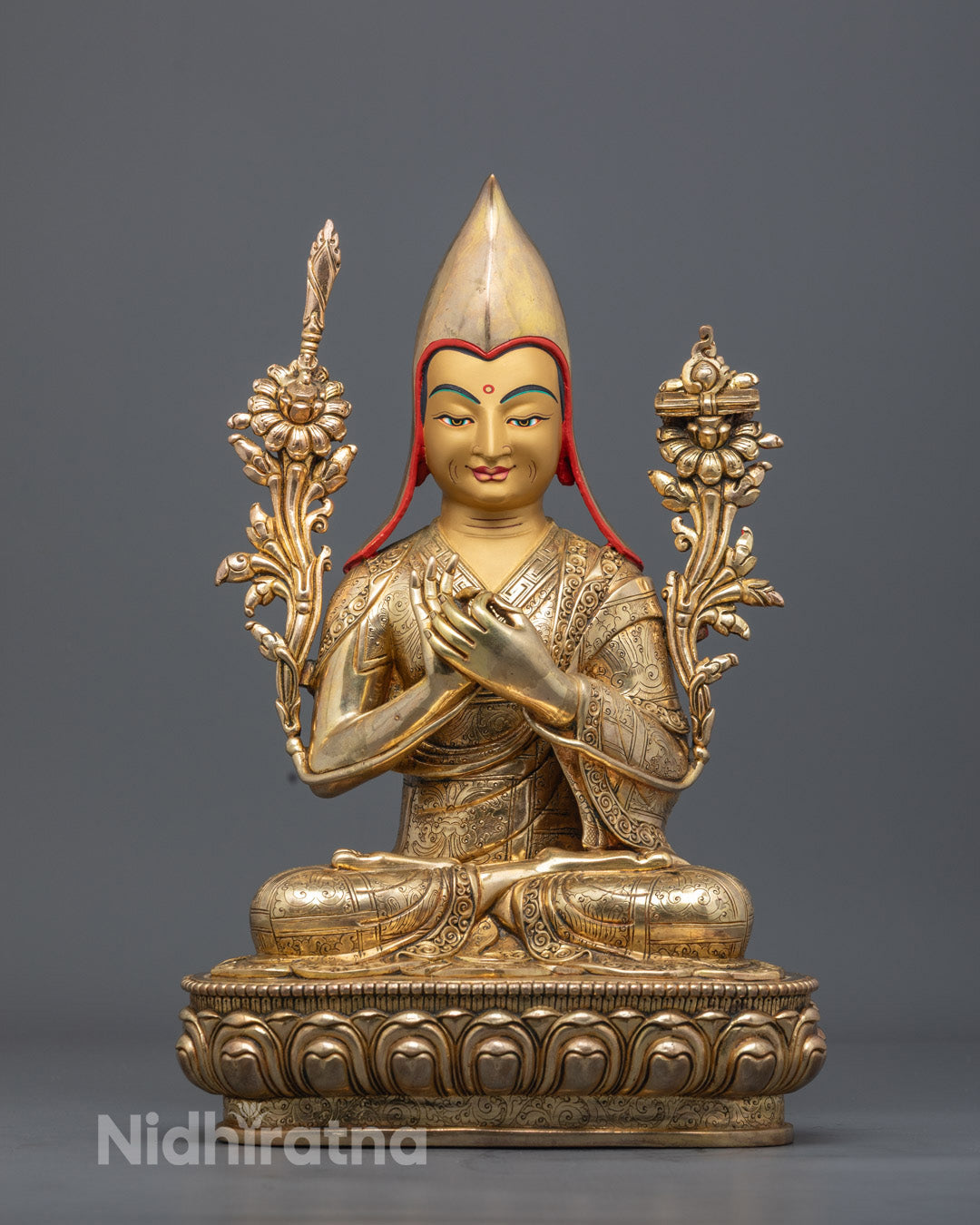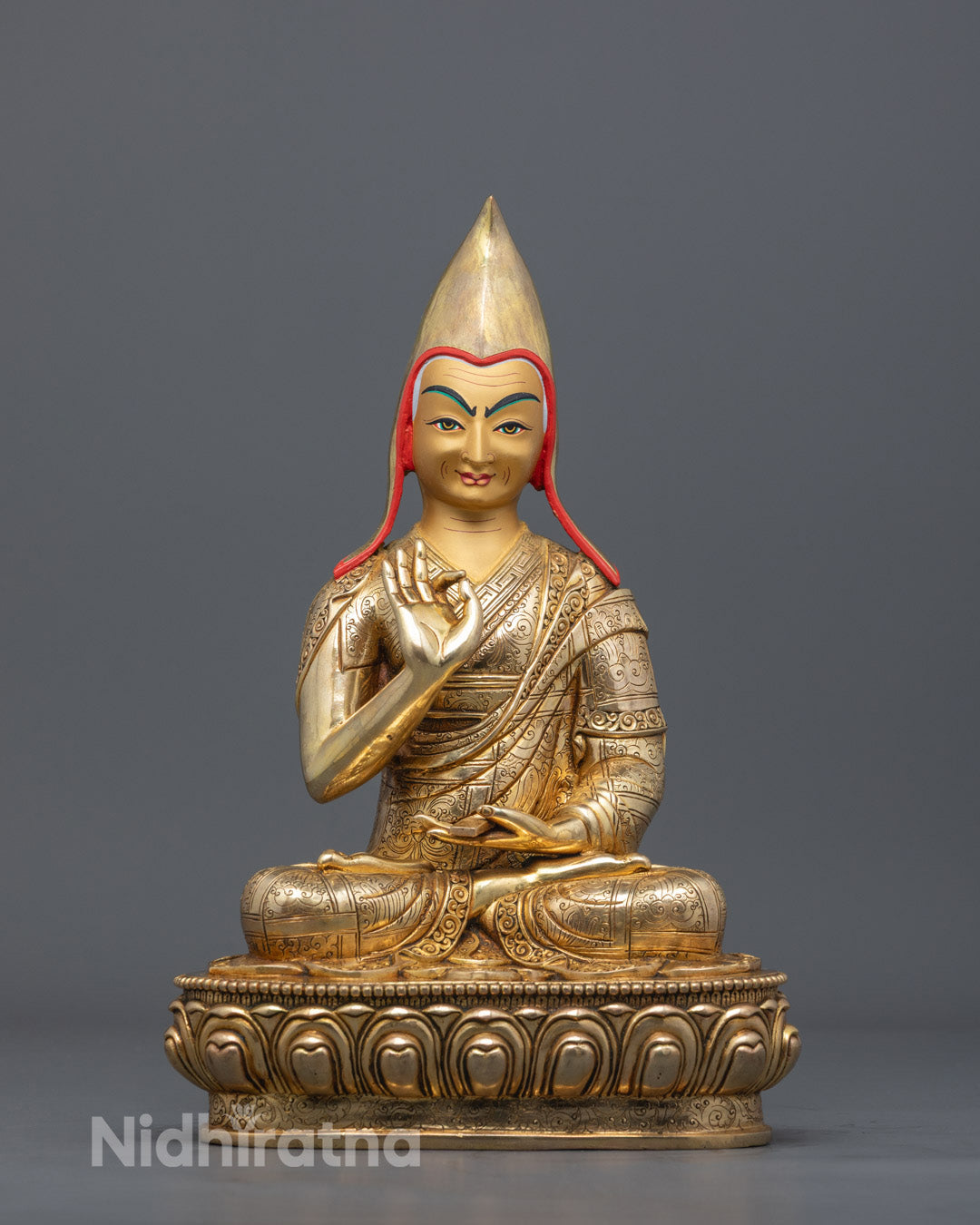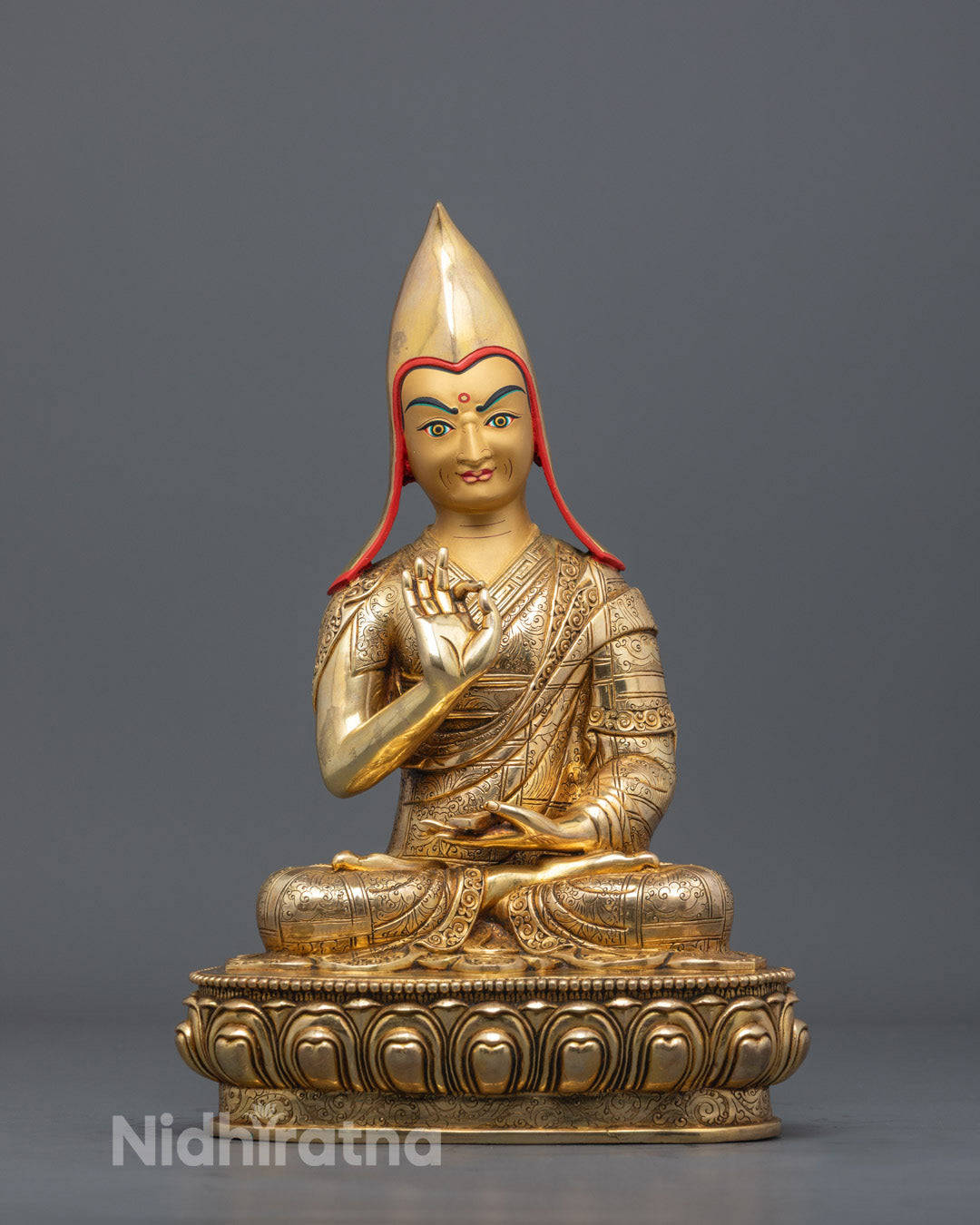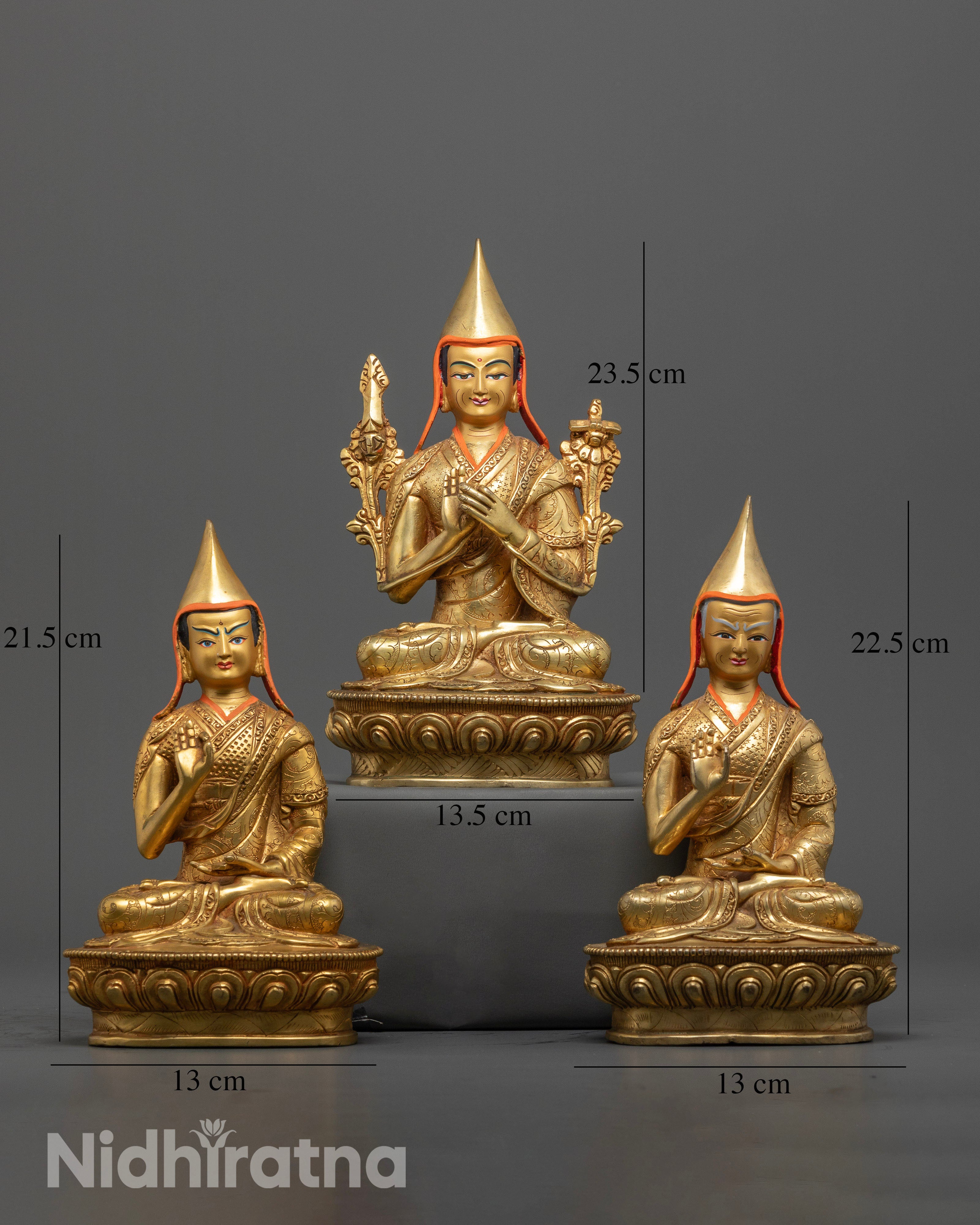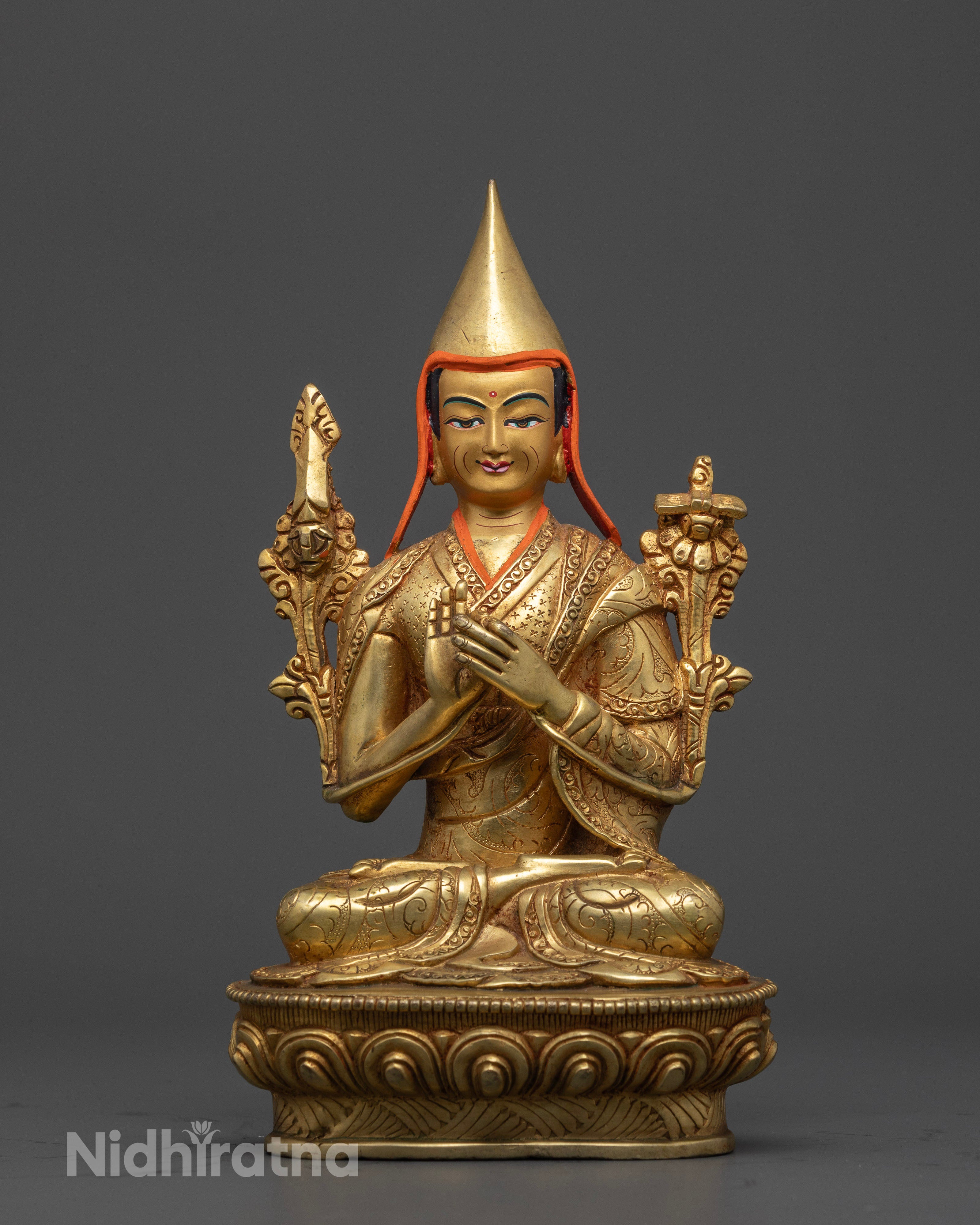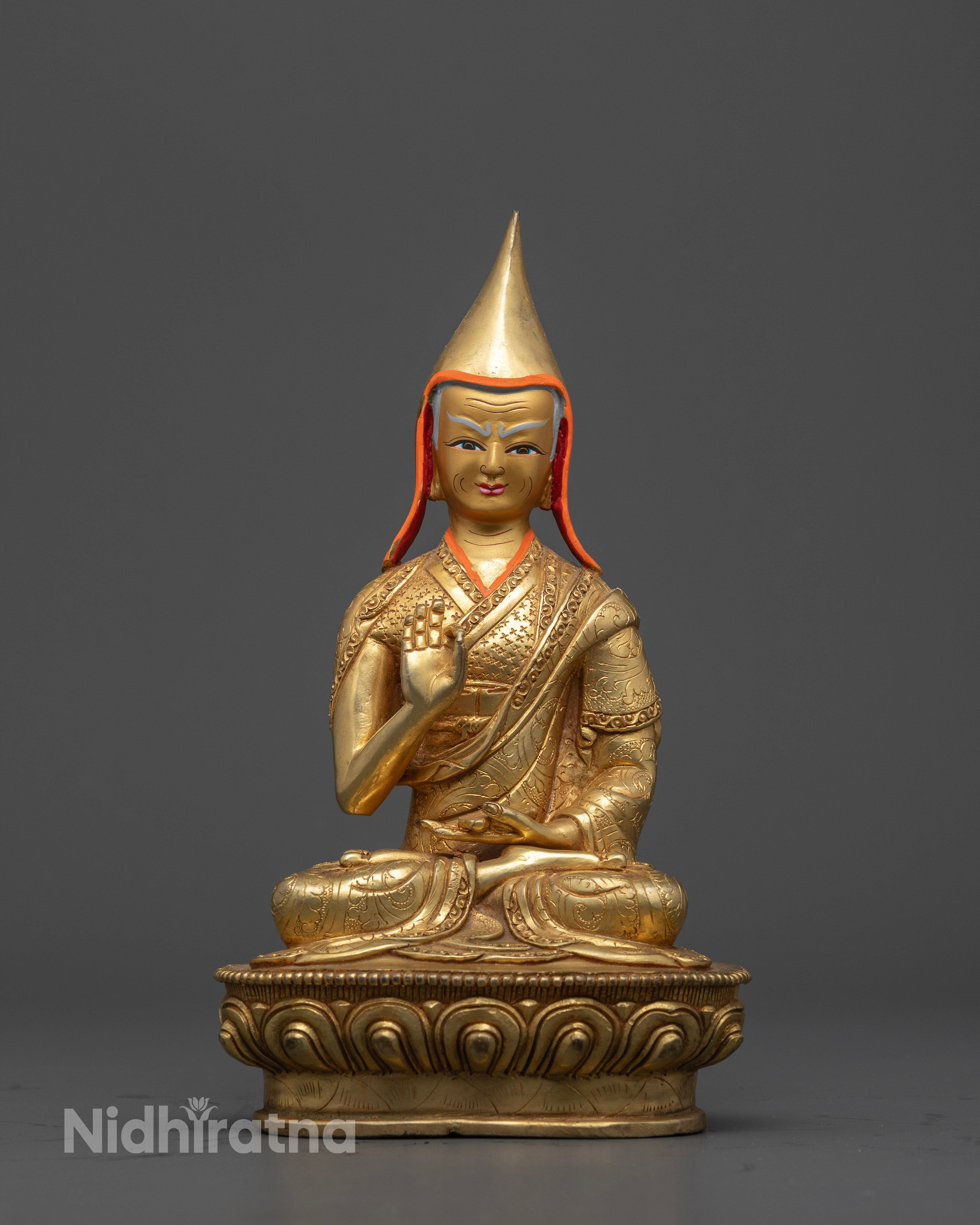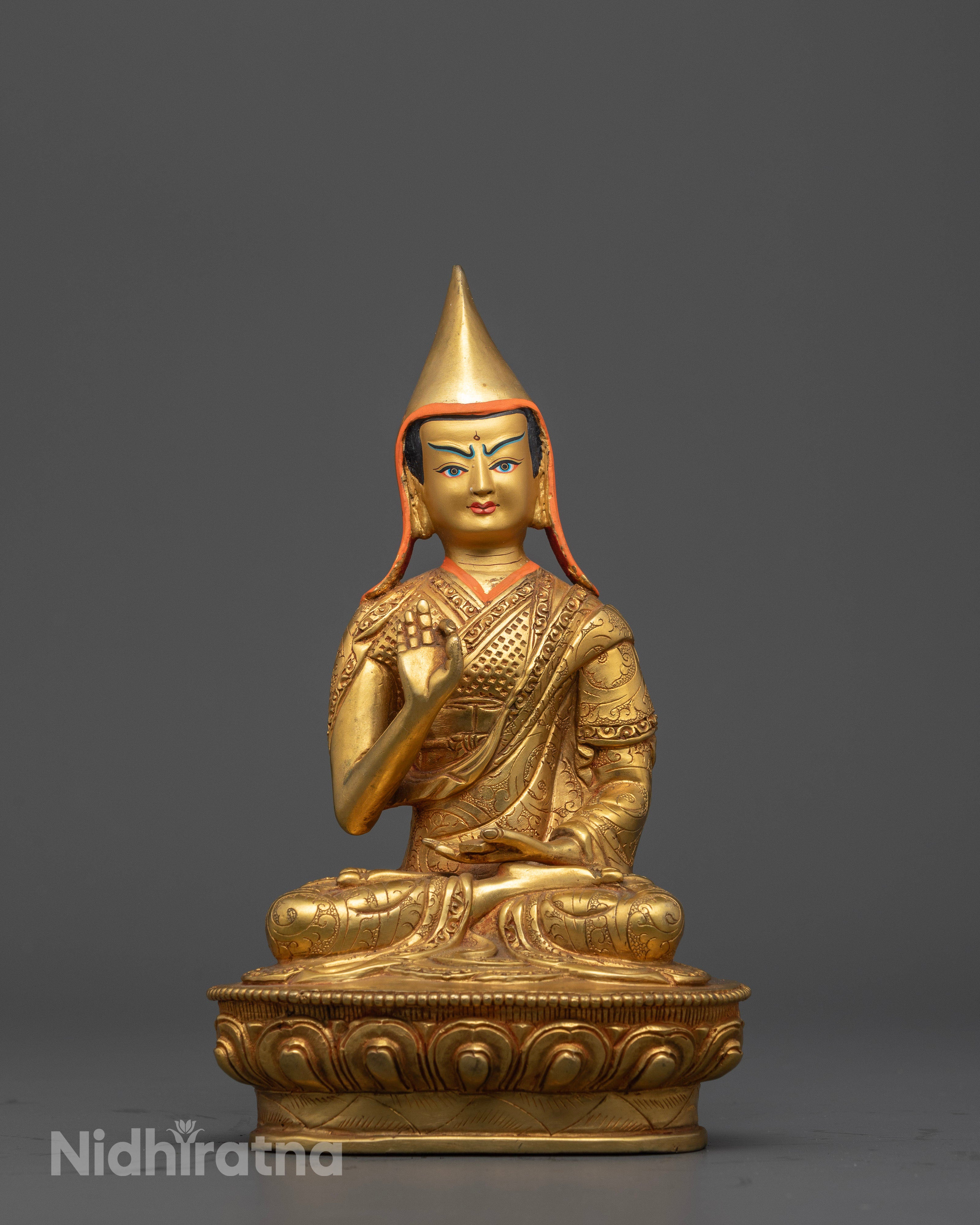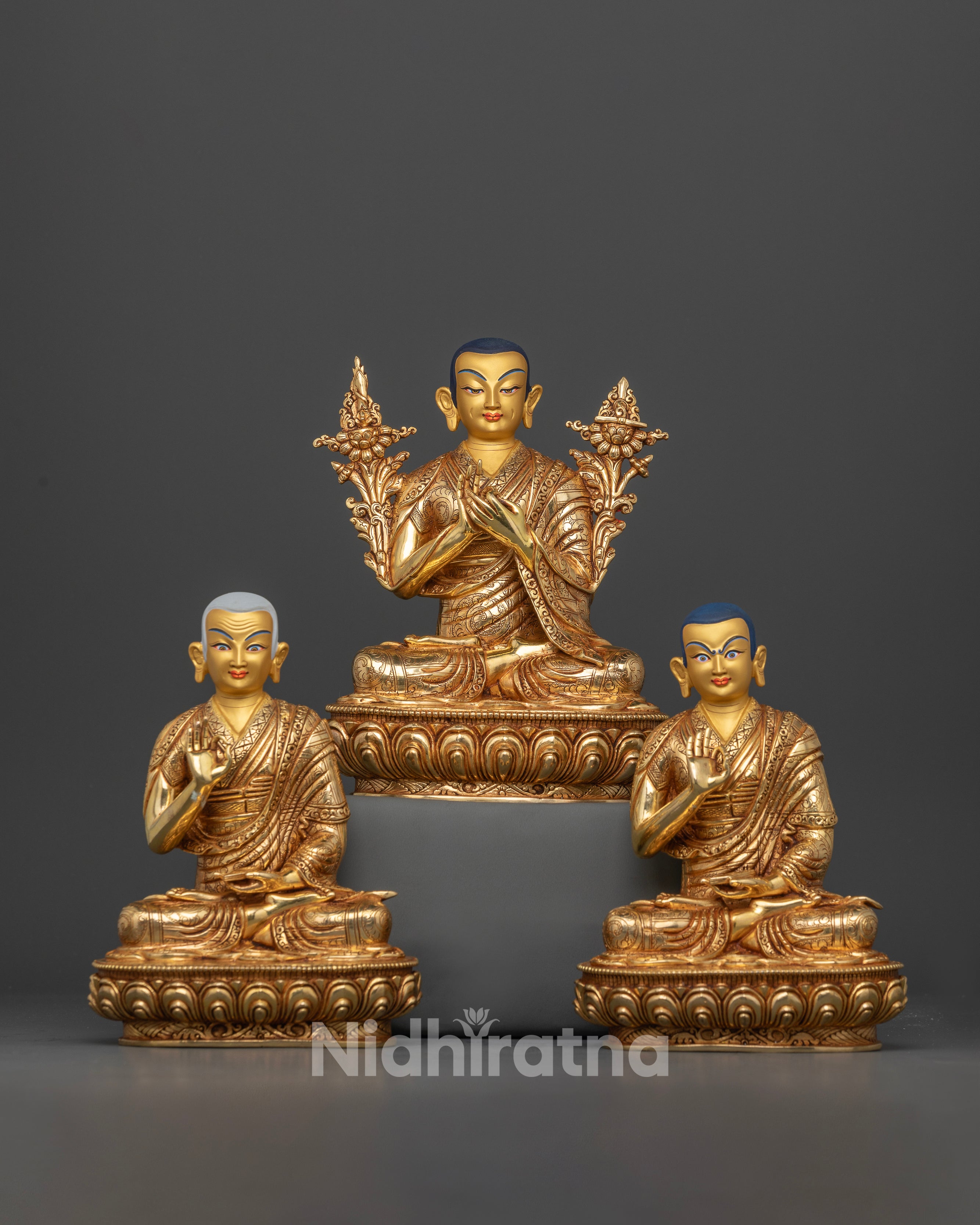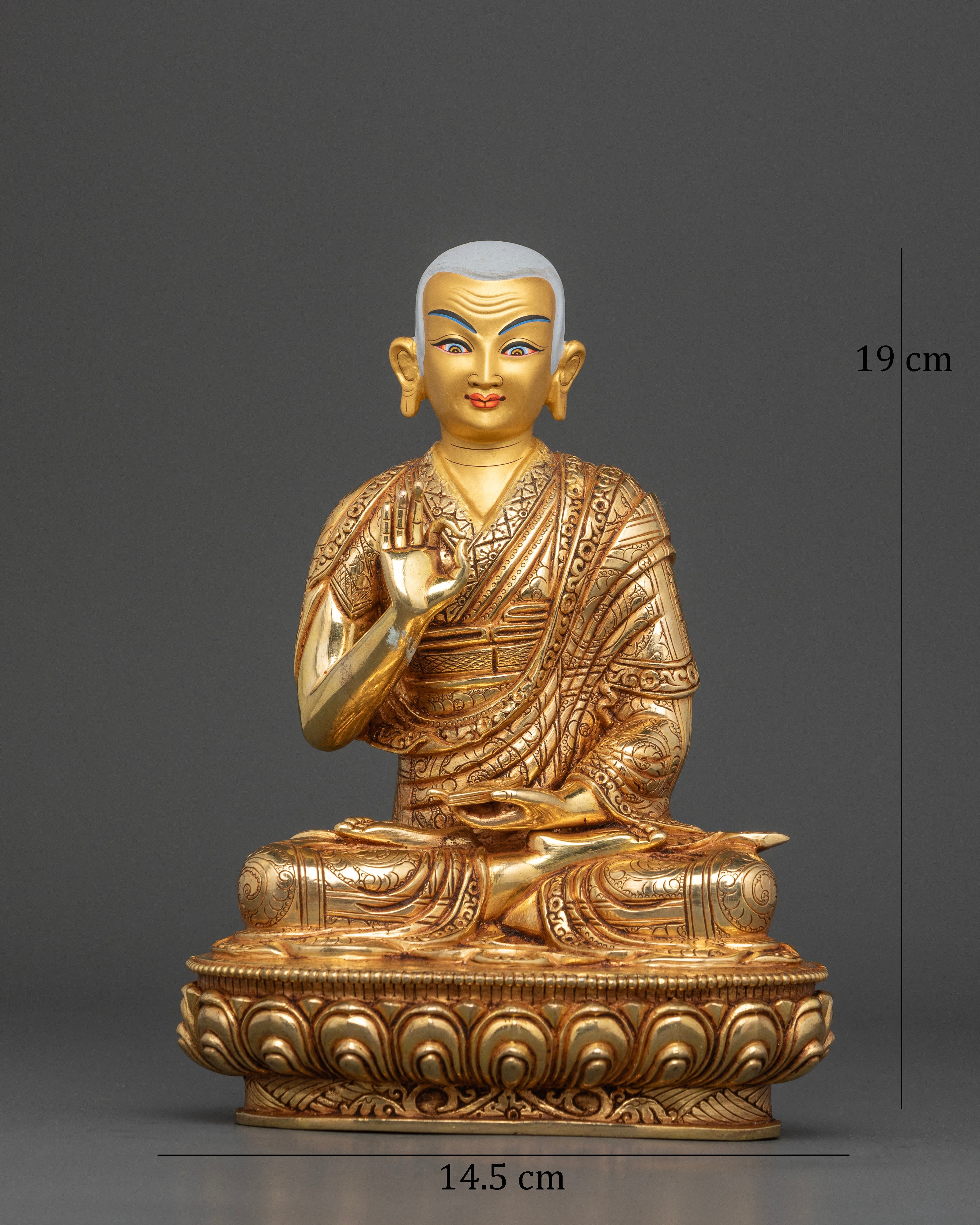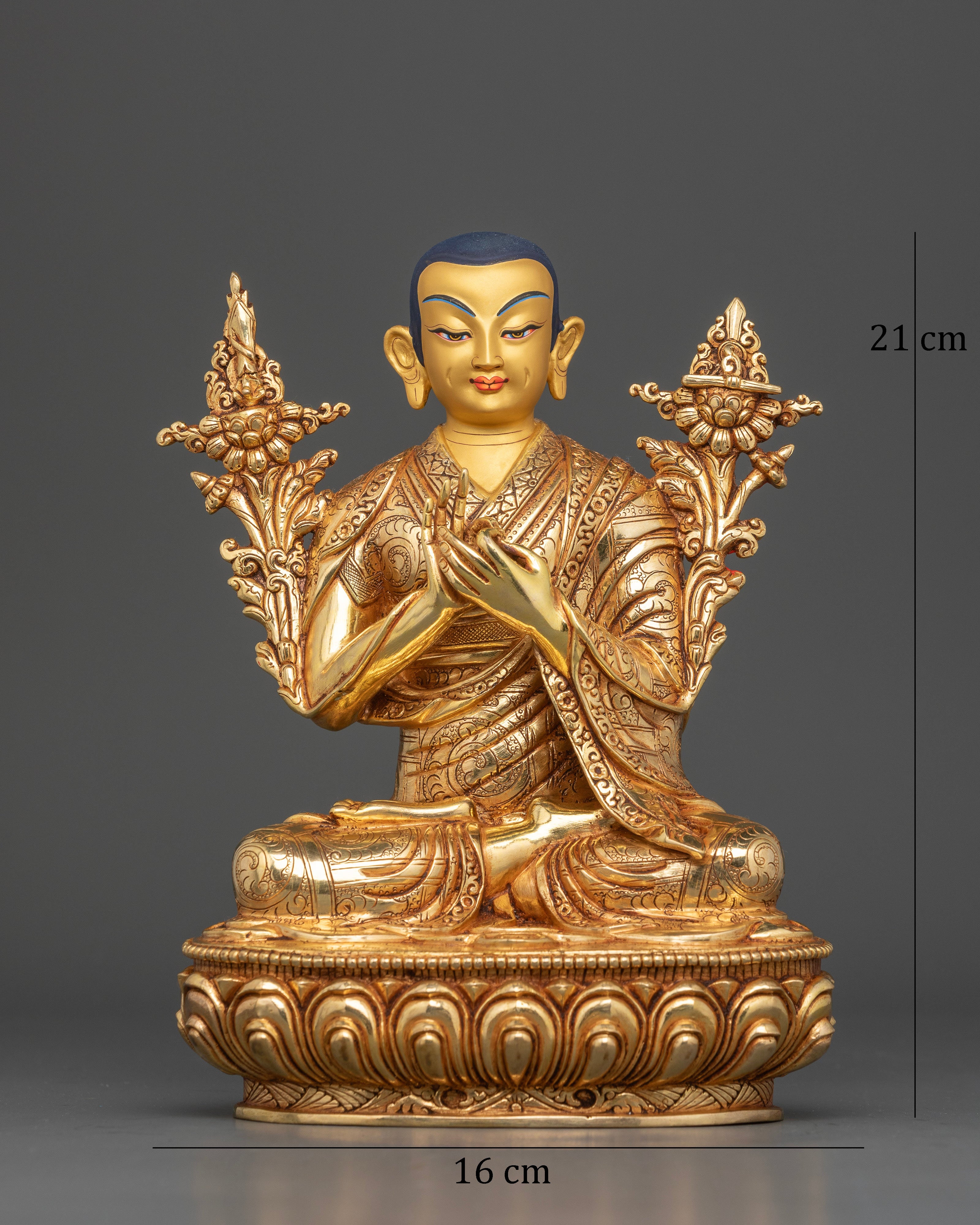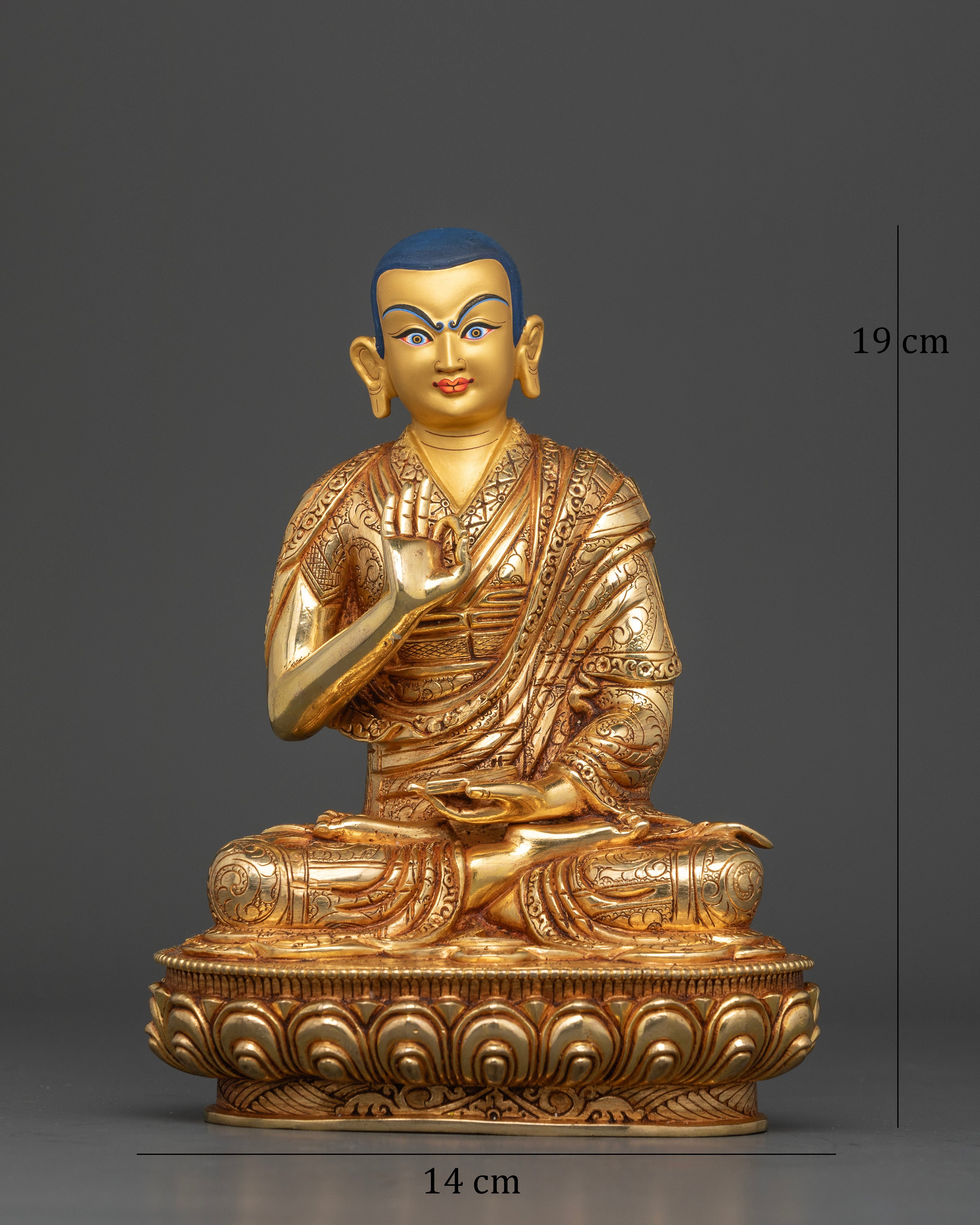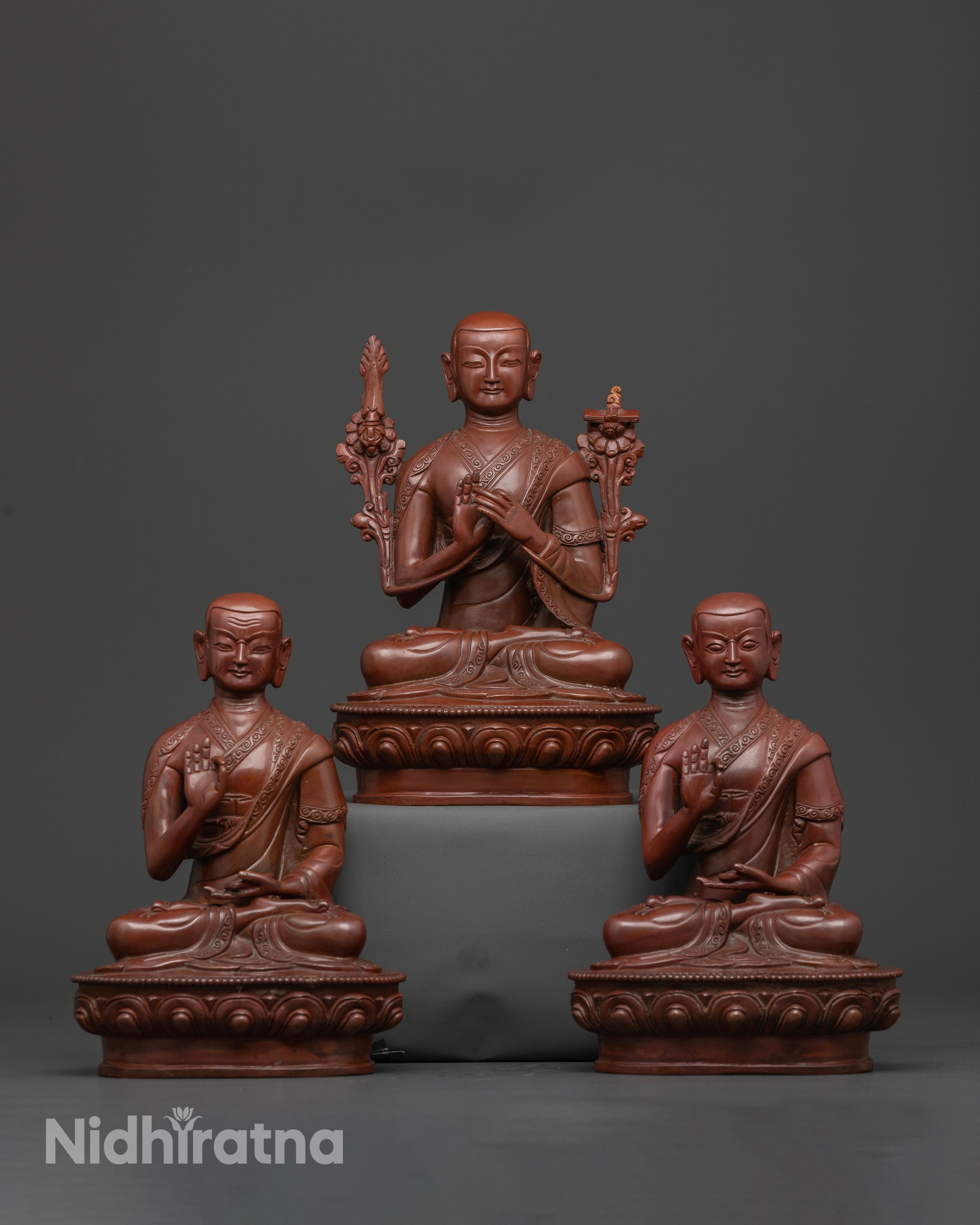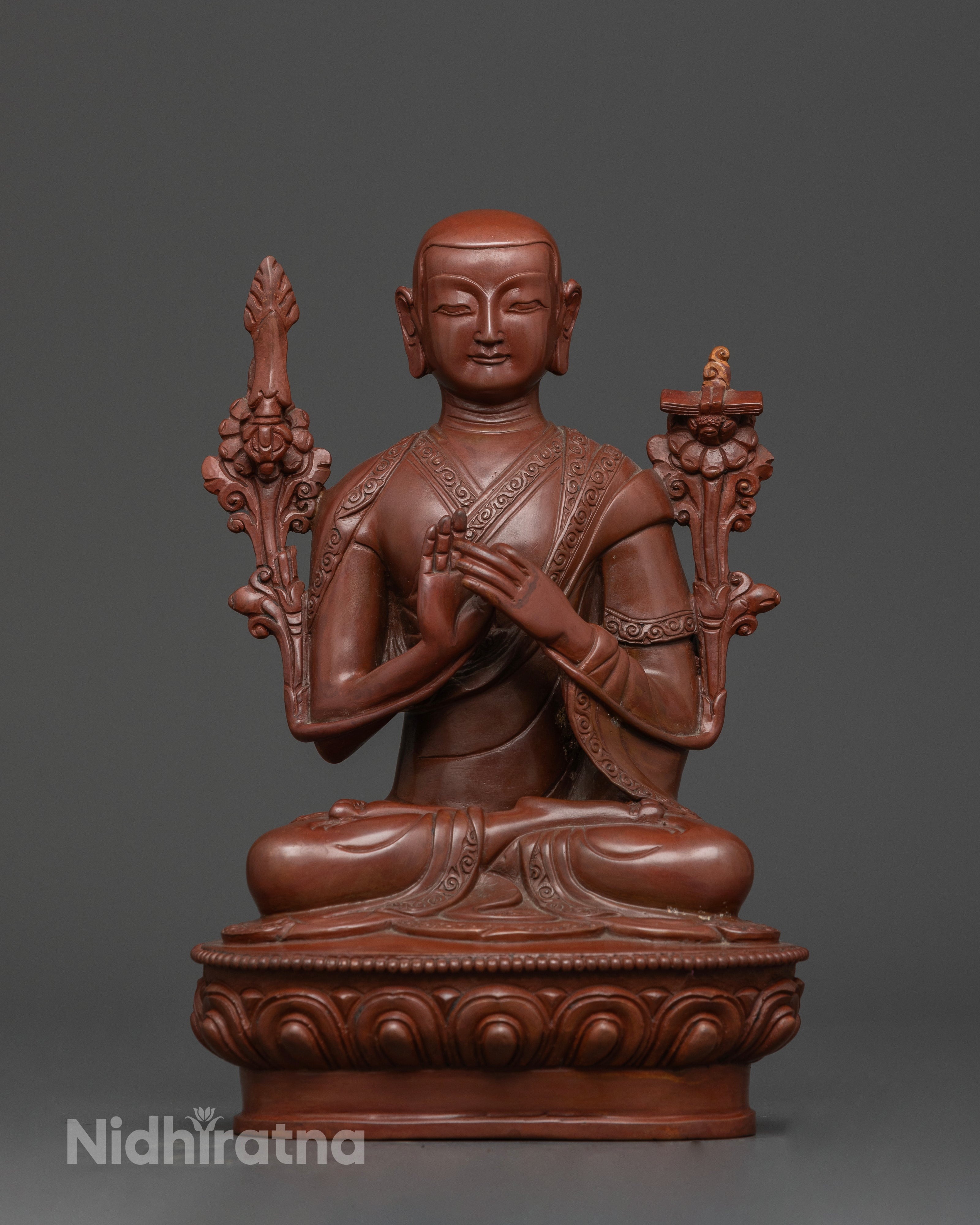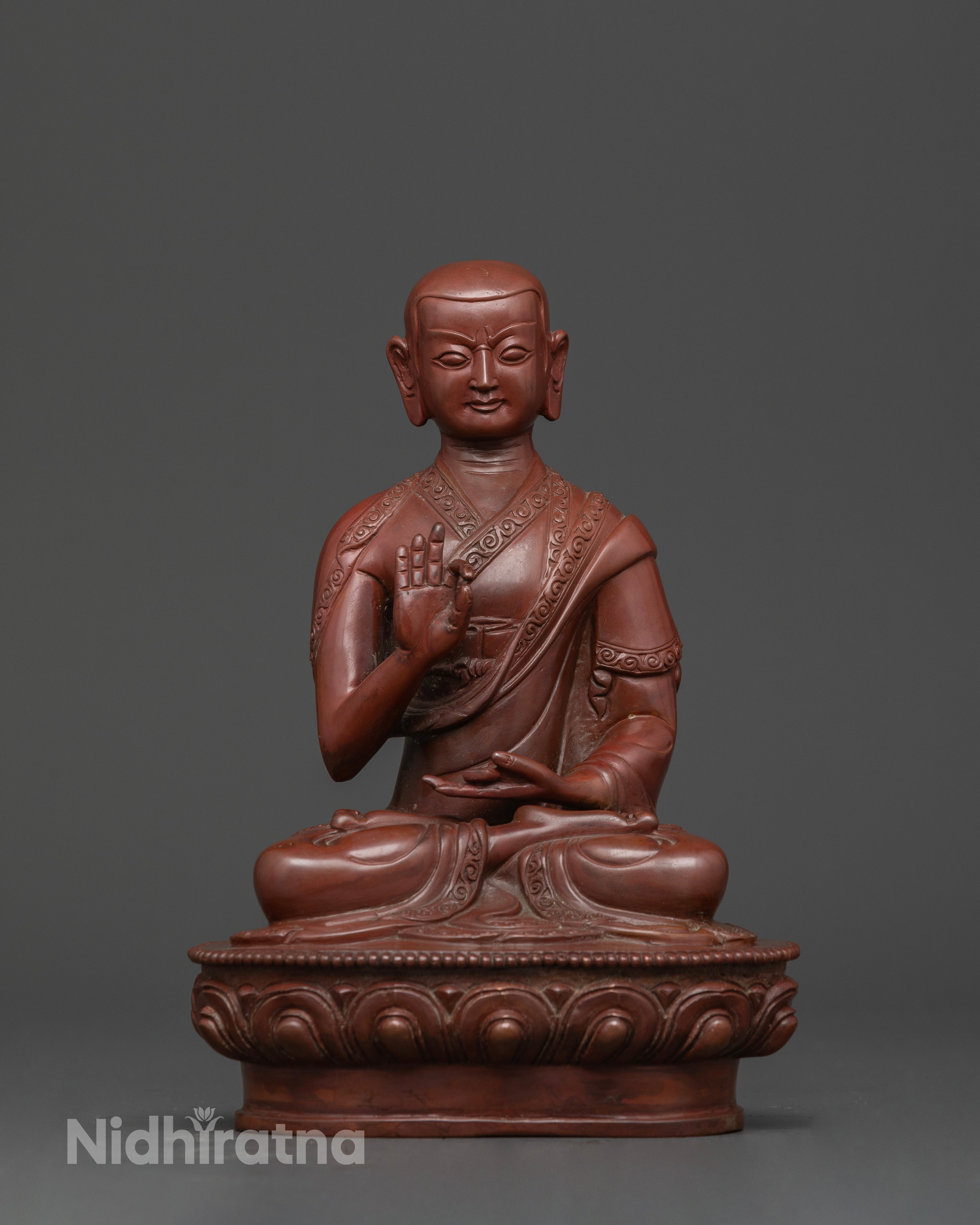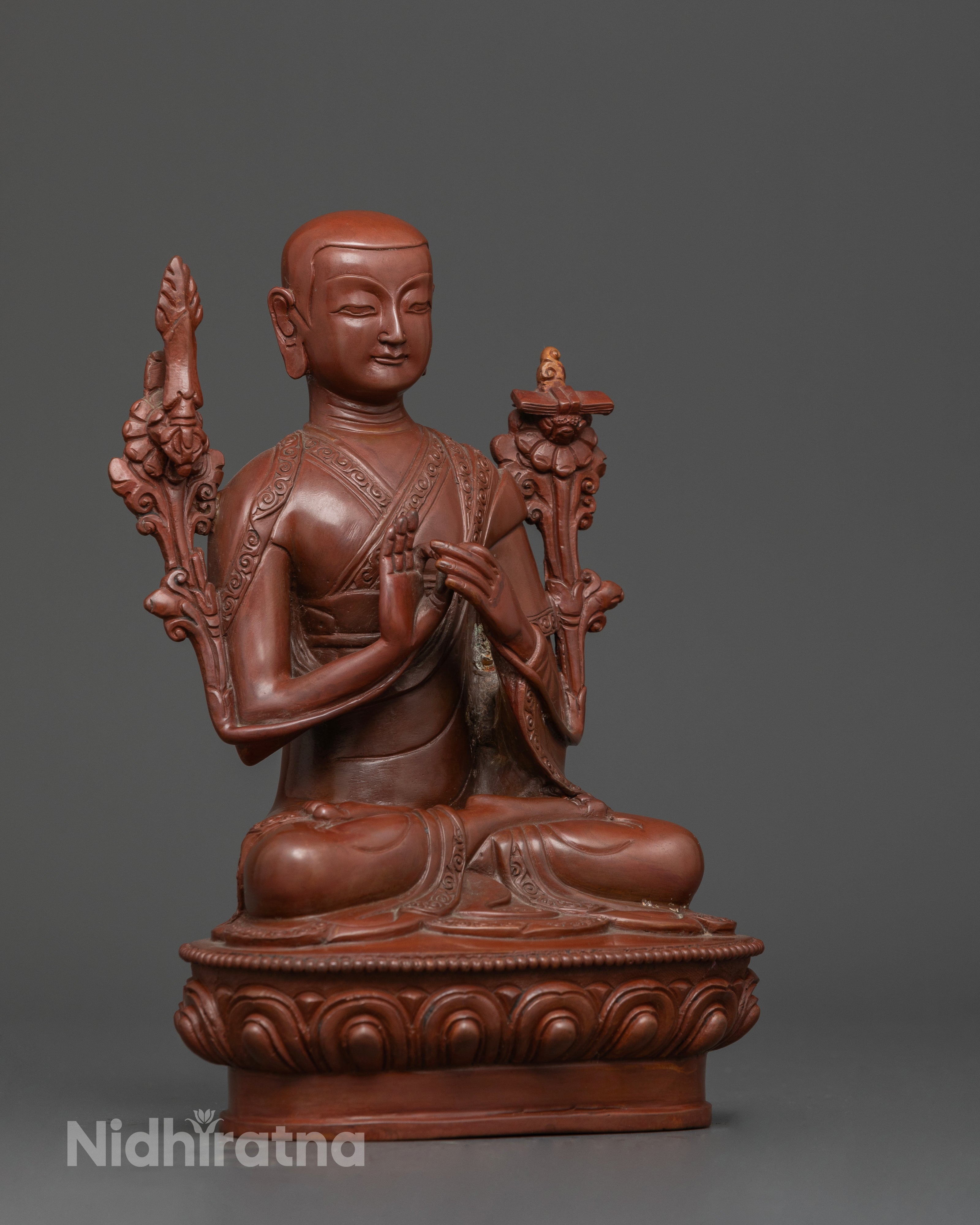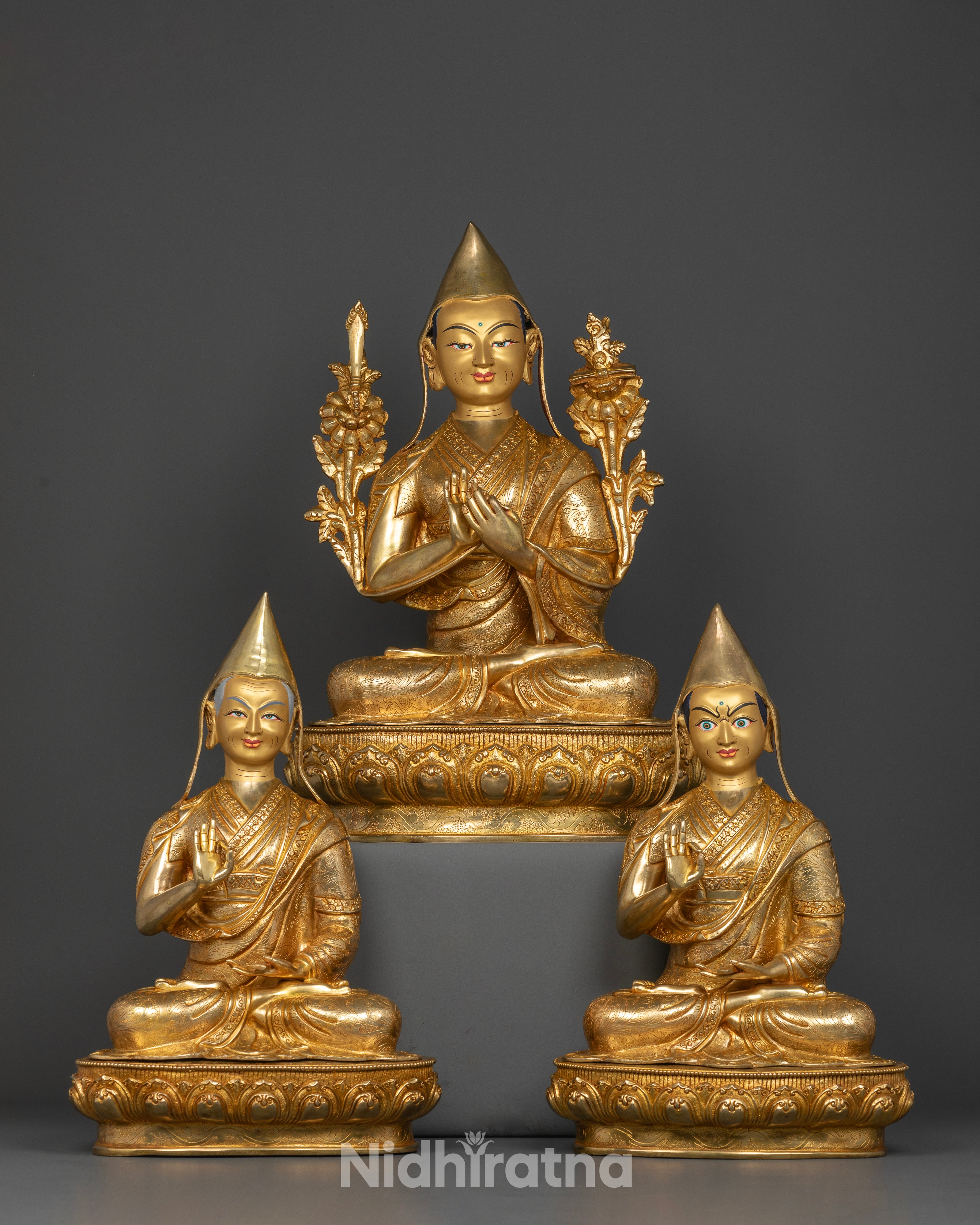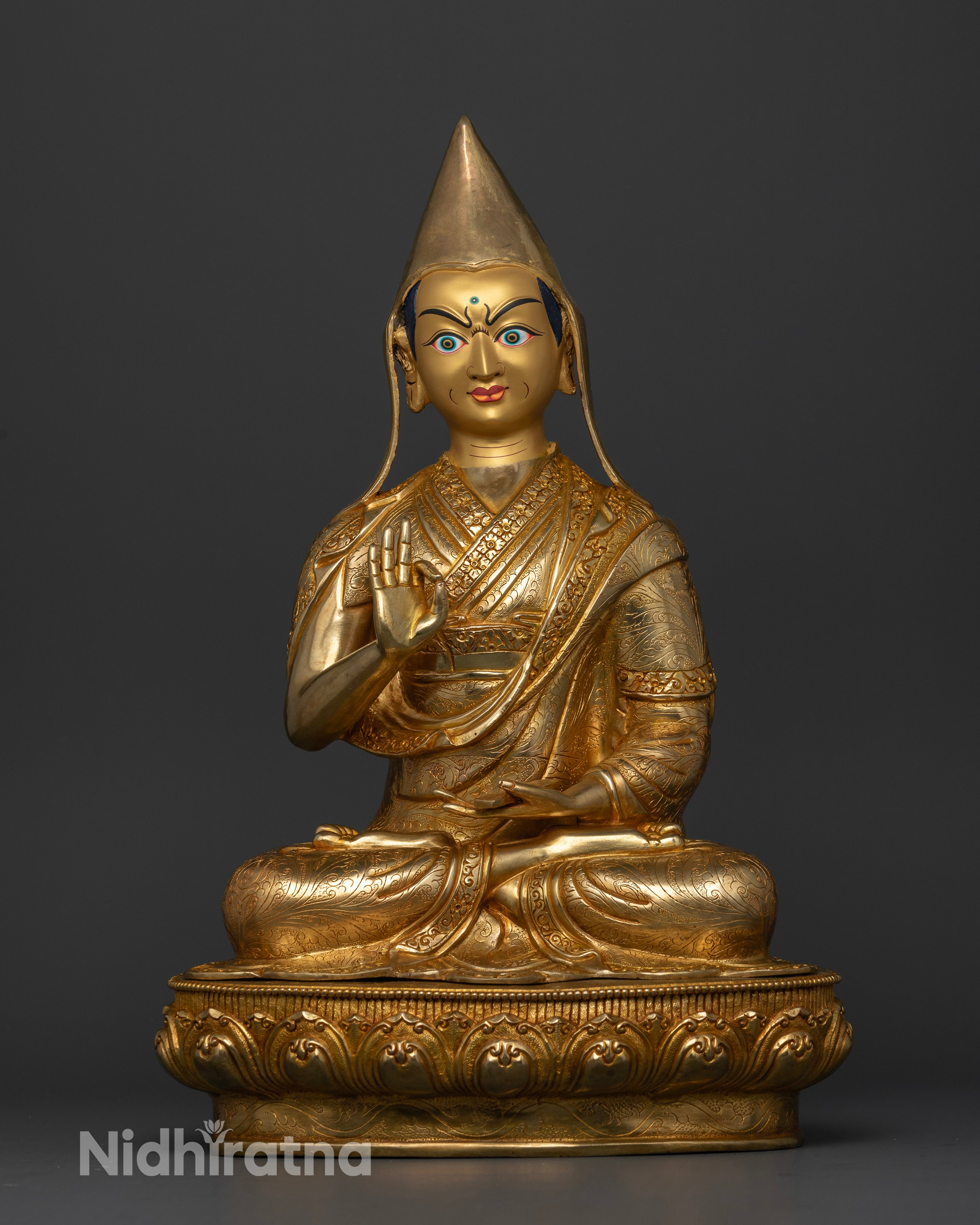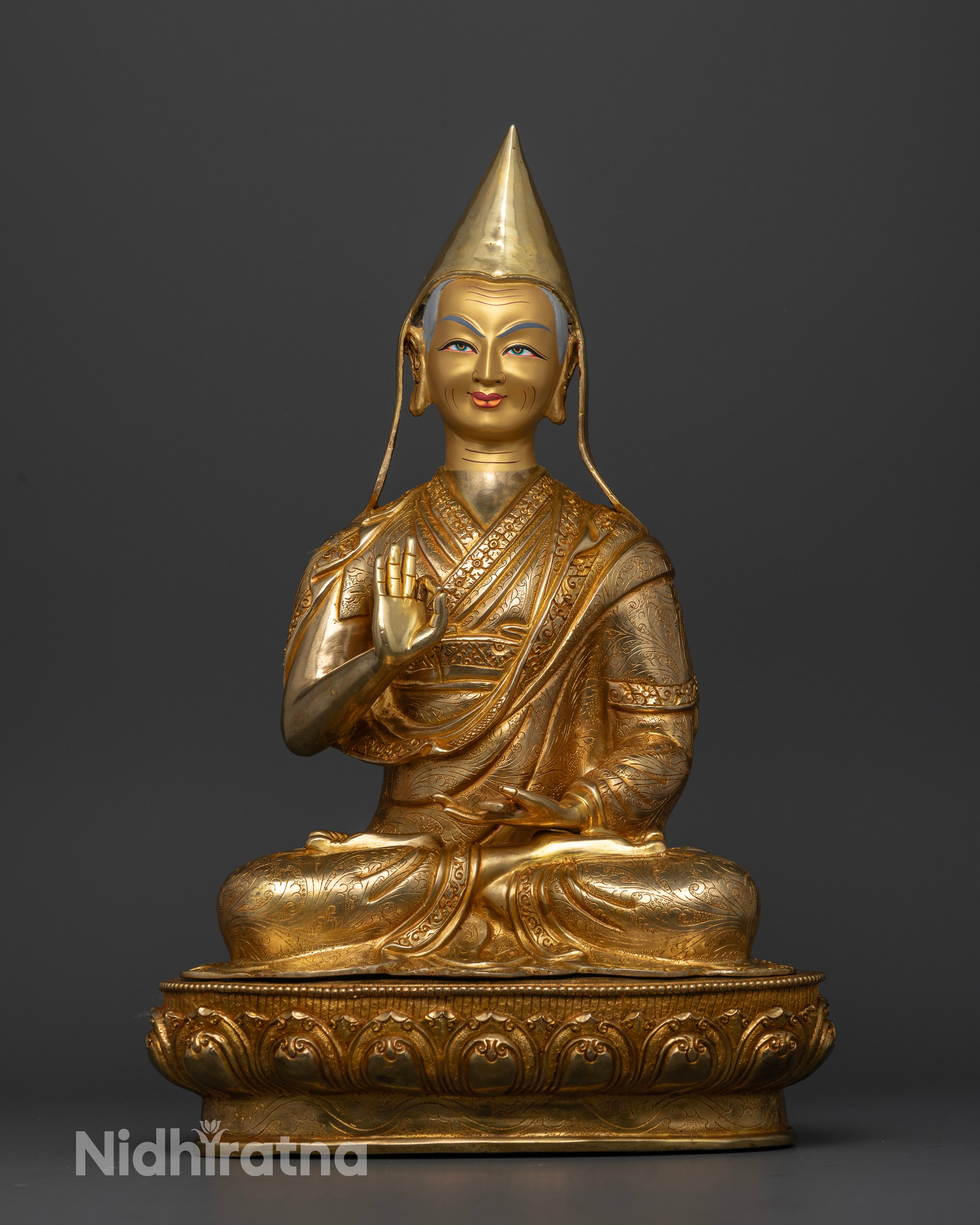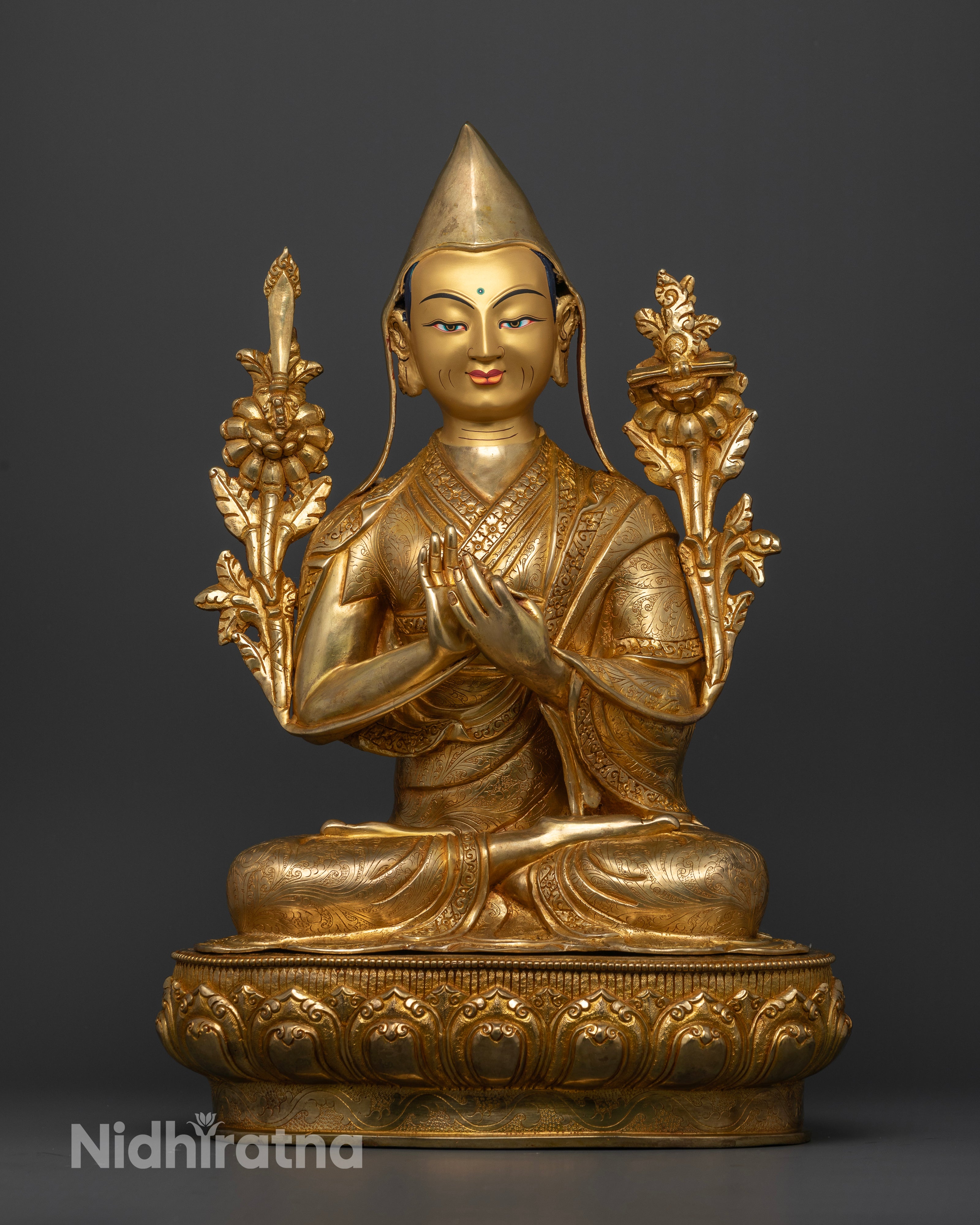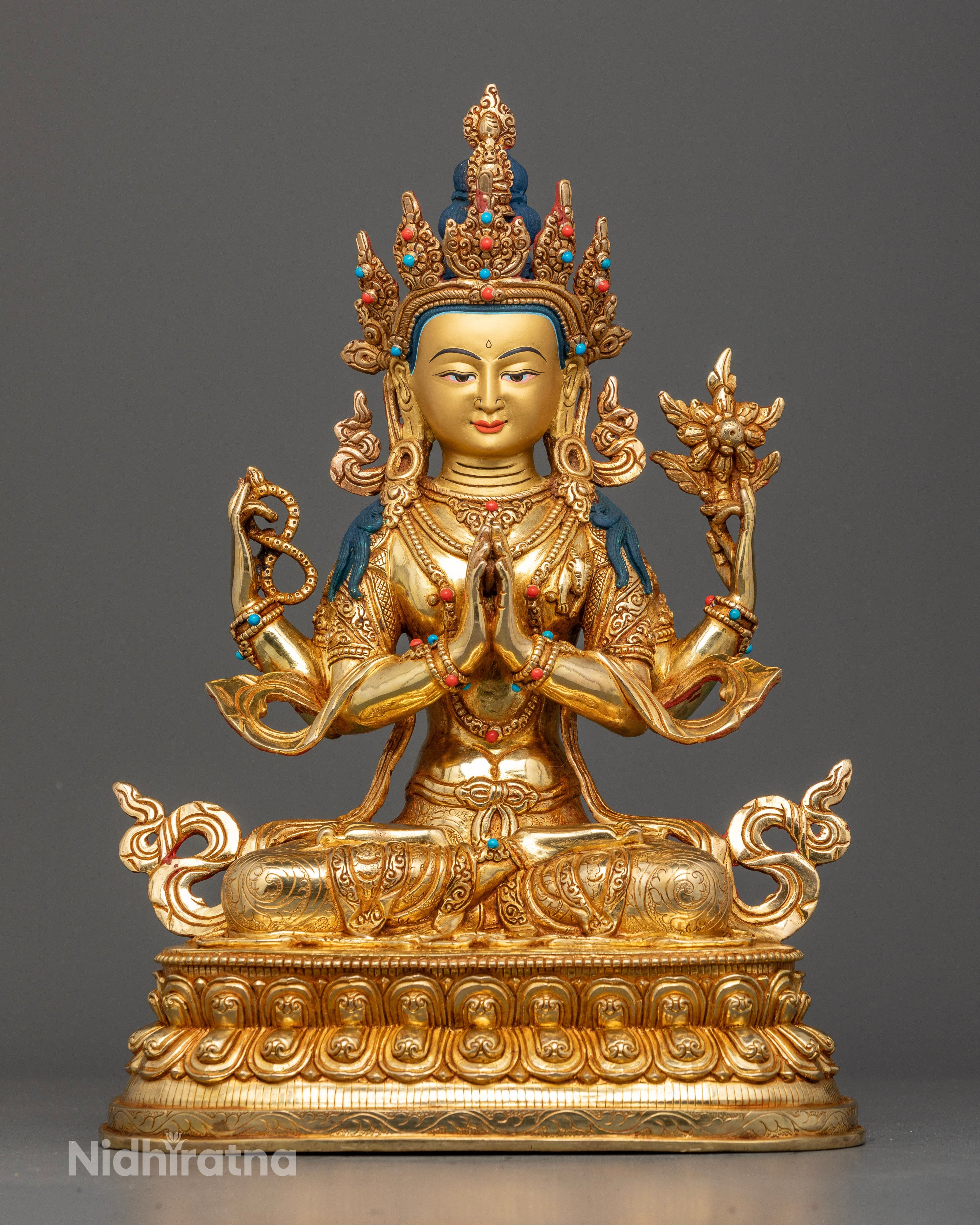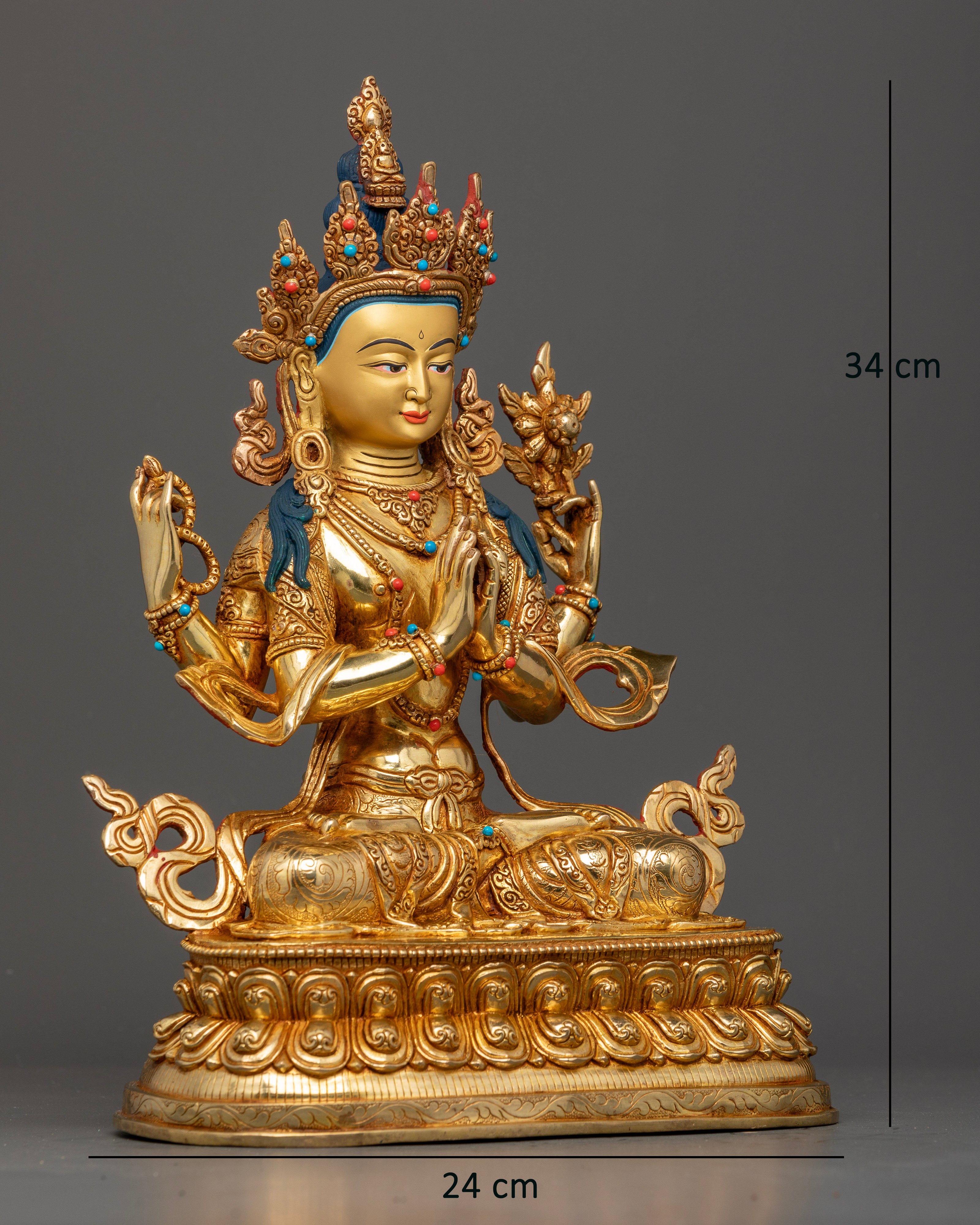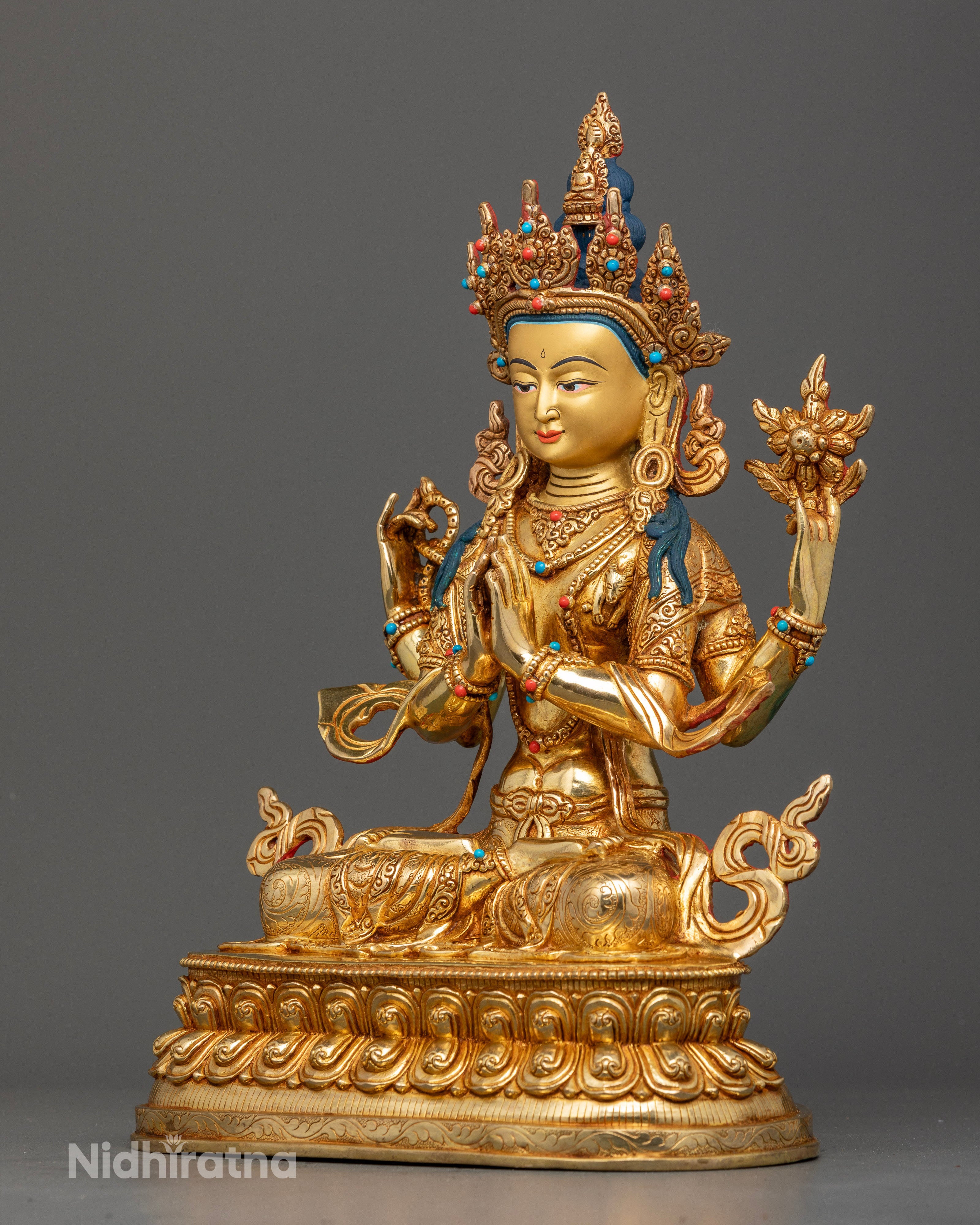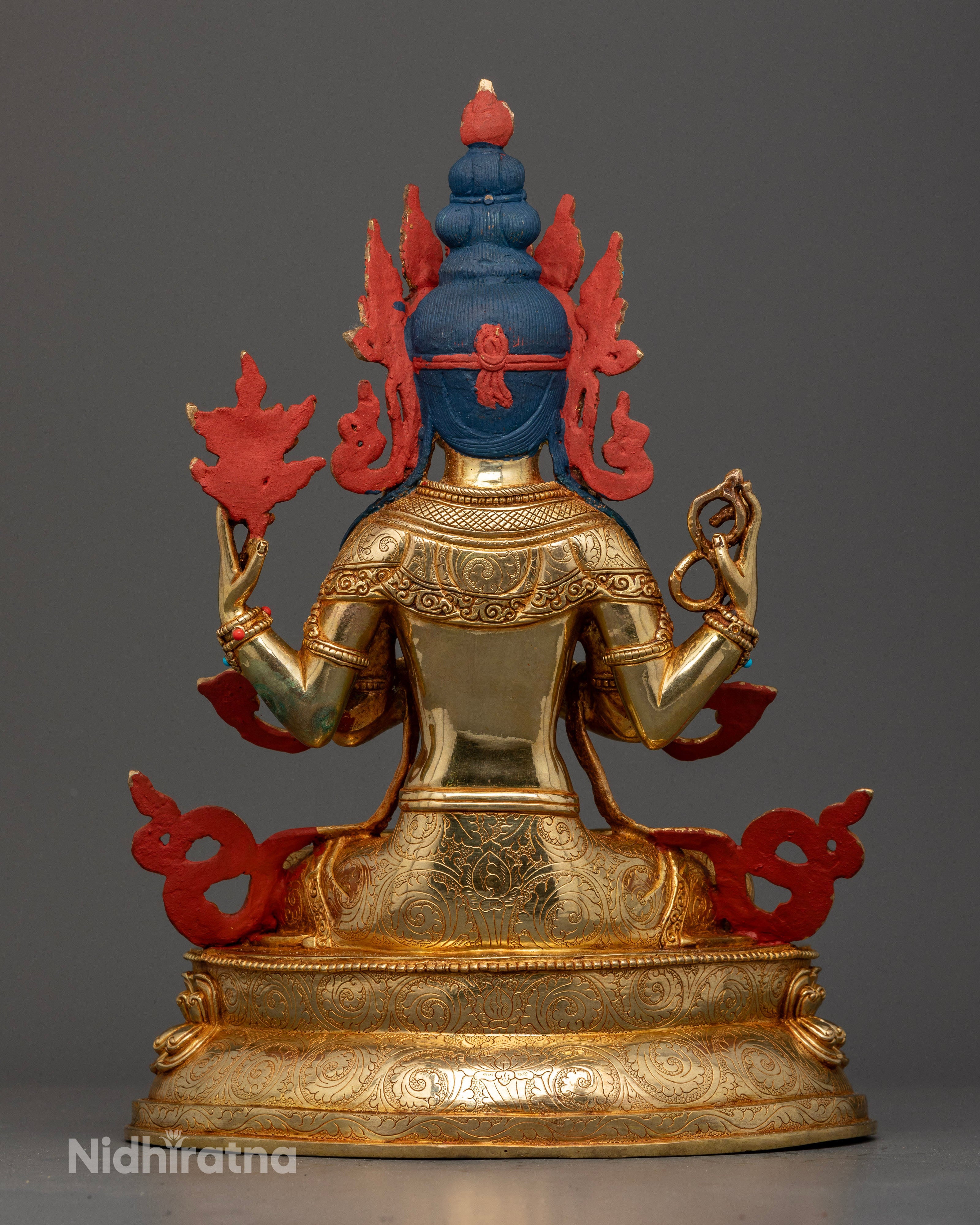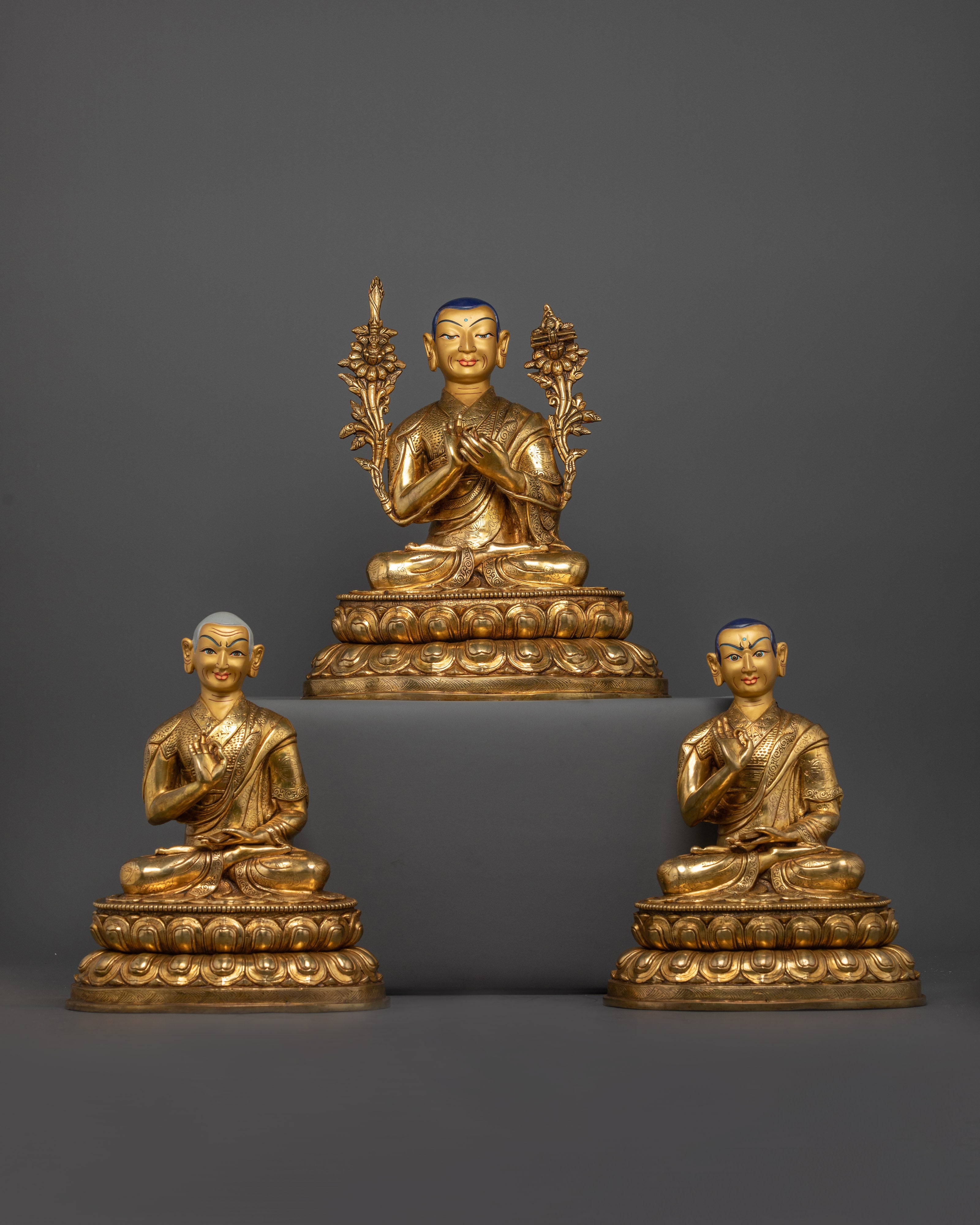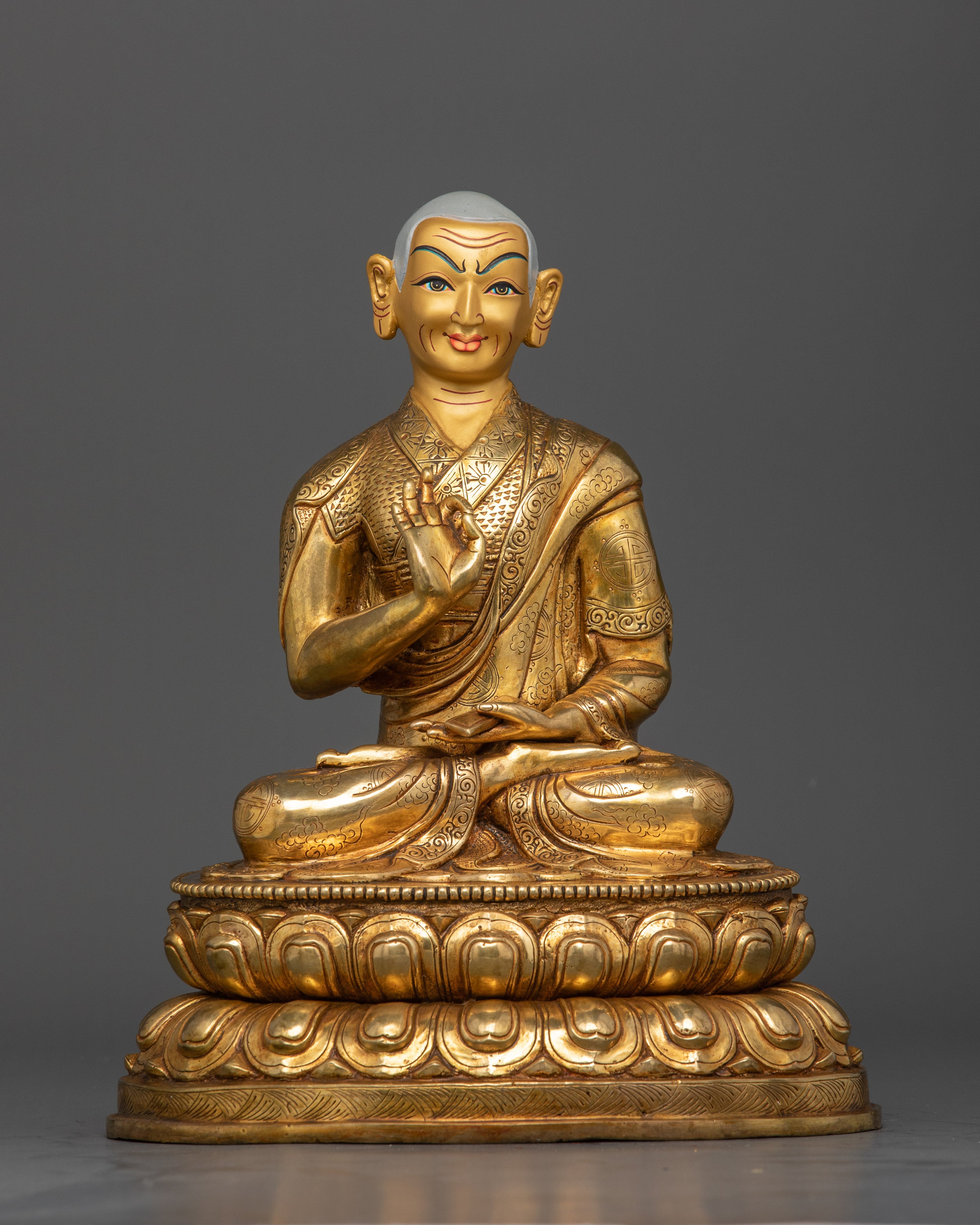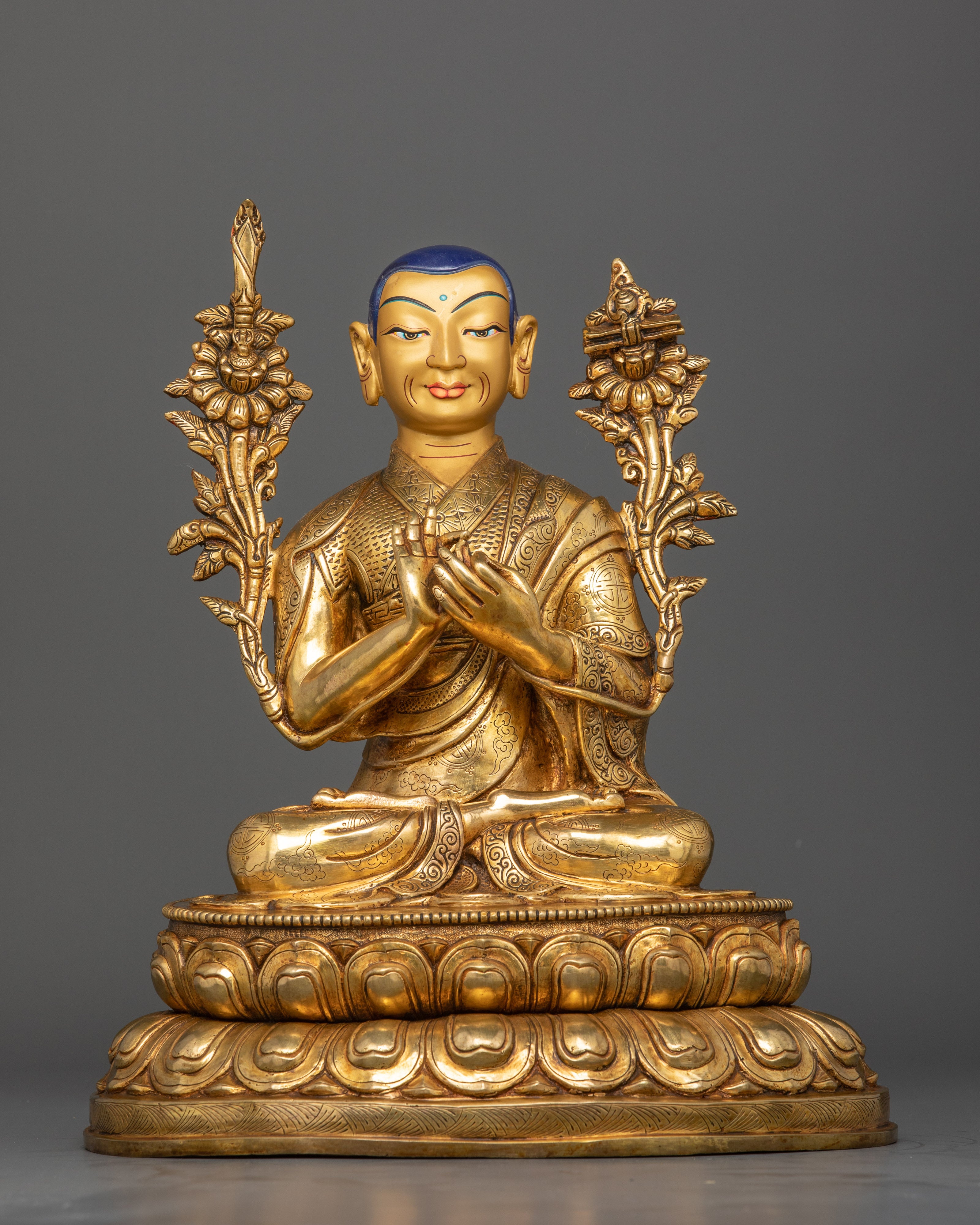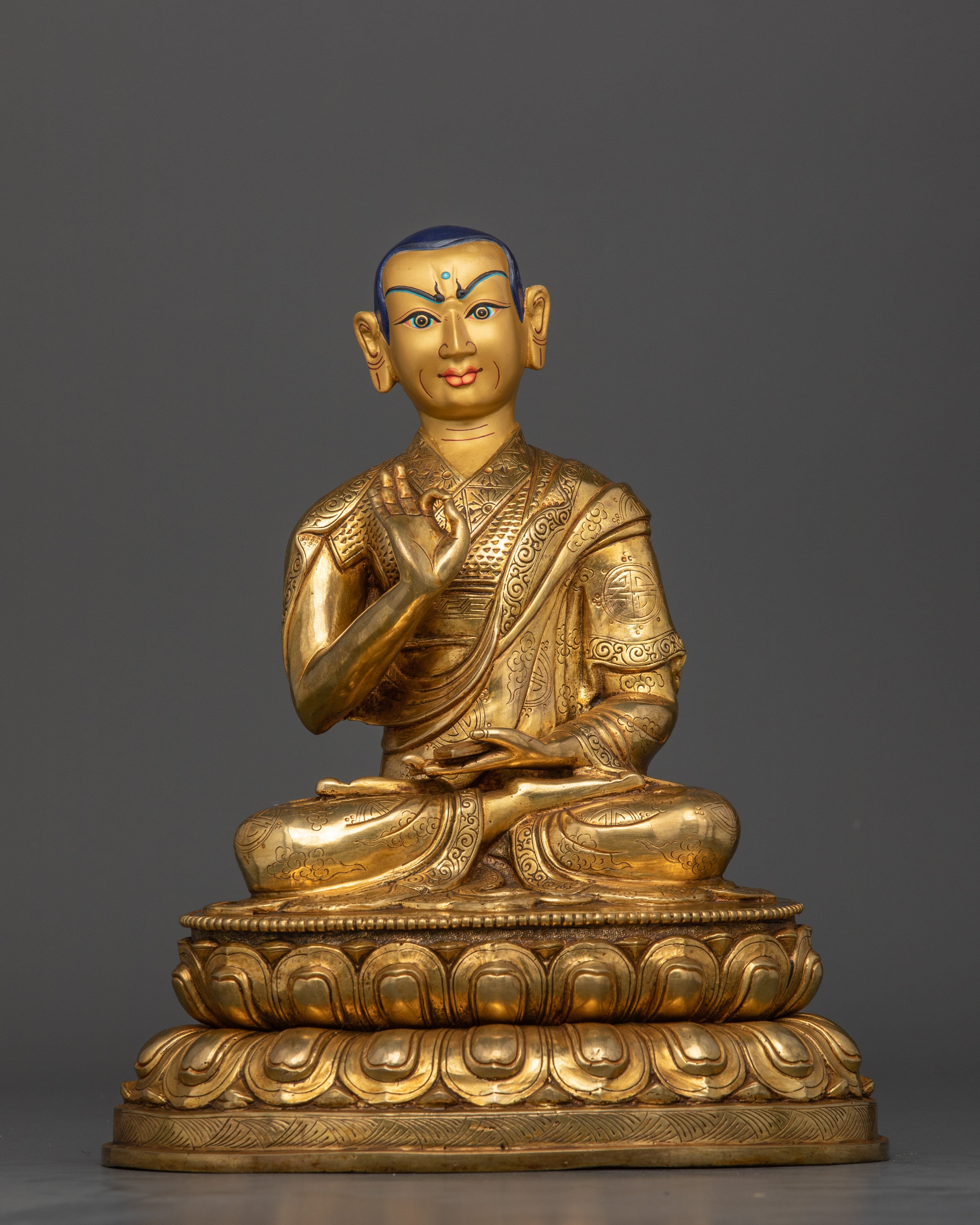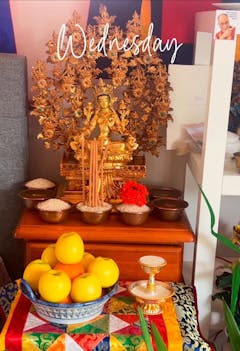Tsong Khapa Statue Set | Tibetan Buddhist Teacher with Two Disciples
Je Tsongkhapa Set | Father of the Gelug Lineage with his Disciples
Authentic Tsongkhapa Statue Set | Traditional Buddhist Craftsmanship
Je Tsongkhapa and His Disciples Statue Set | Buddhist Lama Statues
Lama Je Tsongkhapa Set Statue | 24K Gold-Gilded Gelug Master Trio
Handcrafted Tsongkhapa Set Statues | Himalayan Buddhist Art
The Master of Debate: Tsongkhapa's Teachings in Sculpture
Tsongkhapa: The Sacred Guide in Radiant Gold
Tsongkhapa and His Disciples: The Sacred Set in Oxidized Craftsmanship
Authentic Tsongkhapa Set: A Symbol of Wisdom and Compassion
The Tsongkhapa Triad: Embodiments of Wisdom, Compassion & Enlightenment
Nidhiratna’s Tsongkhapa Set: The Master of Wisdom and Compassion
Nidhiratna’s Tsongkhapa Set is an extraordinary collection of statues dedicated to Je Tsongkhapa, the revered founder of the Gelug tradition of Tibetan Buddhism. Each figure within the set captures Tsongkhapa’s embodiment of profound wisdom, deep compassion, and unyielding commitment to the Dharma. Handcrafted by master artisans from Nepal, these statues are designed with meticulous attention to every detail, ensuring they reflect Tsongkhapa's teachings and legacy with both spiritual depth and artistic excellence. The statues are gold gilded over copper, showcasing not only the elegance of traditional Tibetan art but also the sacred symbolism that makes each piece a spiritual treasure.
The creation of the Tsongkhapa Set demands years of dedicated craftsmanship. Each statue is made with exceptional skill, honoring a long-standing tradition of artisan knowledge passed down through generations. The process involves intricate detailing and a deep understanding of the spiritual significance of Tsongkhapa’s role in Buddhism. Every stroke, from the design of his robes to the expressions on his face, embodies the teachings of this great teacher, offering a visual and meditative focus for practitioners.
The Tsongkhapa Set
The Tsongkhapa Set typically includes multiple forms of the great teacher, each representing different aspects of his life and spiritual journey. The statues in this set offer a comprehensive portrayal of Tsongkhapa’s deep wisdom, boundless compassion, and dedication to the path of enlightenment. The set serves not only as an artistic masterpiece but also as a spiritual guide, inviting practitioners to meditate on his teachings and qualities.
-
Seated Tsongkhapa Statue The central figure in the Tsongkhapa Set is usually a seated statue, representing Tsongkhapa in a state of deep meditation. His expression is serene yet resolute, symbolizing his profound inner wisdom. The hands of the seated Tsongkhapa typically hold a crystal rosary and a Dharma wheel, representing his mastery of the teachings and his role in the transmission of the Dharma. His robes, intricately designed, flow gracefully to symbolize the purity of his mind and his adherence to monastic discipline. The lotus seat upon which he sits reflects the spiritual foundation upon which Tsongkhapa built his life’s work.
-
Standing Tsongkhapa Statue Another prominent statue in the set is the standing Tsongkhapa, often depicted in the posture of a teacher. With one hand raised in a gesture of teaching and the other holding a sacred item, such as a vajra or a Dharma wheel, this statue represents Tsongkhapa’s active role in guiding others on the path to enlightenment. The standing posture also symbolizes Tsongkhapa’s wisdom and compassion in action, as he imparted the Dharma to his students and followers with great energy and devotion. His face radiates joy, inviting practitioners to follow in his footsteps of wisdom and compassion.
-
Tsongkhapa with Disciples In some versions of the set, Tsongkhapa is shown accompanied by his disciples, such as Gyaltsab Je and Khedrup Je. These figures represent the transmission of Tsongkhapa’s teachings to future generations. They serve as a reminder of the importance of studying, practicing, and spreading the Dharma to benefit all sentient beings. The inclusion of disciples in the set highlights Tsongkhapa’s role as a teacher and mentor, and it symbolizes the continuity of his teachings within the Gelug tradition.
-
Tsongkhapa in the Lotus Pose A more meditative representation of Tsongkhapa can be found in the lotus pose statue, where he is depicted in a peaceful, seated posture with his legs crossed and his hands in a mudra of transmission or meditation. This statue emphasizes Tsongkhapa’s deep connection to the Dharma and his embodiment of wisdom. His serene expression, coupled with the careful placement of his hands, invites practitioners to focus their minds and reflect on the teachings of Tsongkhapa, which emphasized the integration of study, meditation, and ethical conduct.
Craftsmanship and Design
Each statue in the Tsongkhapa Set is meticulously crafted by skilled artisans, primarily in Nepal, who follow traditional techniques passed down through generations. The statues are made from copper and gold gilded, creating a radiant surface that symbolizes the wisdom and purity of Tsongkhapa. The gold gilding also represents the enlightened nature of the teacher, illuminating the spiritual qualities of wisdom, compassion, and virtue that he embodied.
The robes and ornaments of Tsongkhapa’s statues are carefully designed, reflecting his monastic discipline and the sacred nature of his teachings. His robes are intricately detailed, with patterns symbolizing purity and transcendence. The face of Tsongkhapa is rendered with serenity and clarity, capturing the profound wisdom that he is known for. His eyes radiate a sense of compassion, inviting practitioners to engage in the practice of cultivating bodhicitta, the wish for all beings to attain enlightenment.
Symbolism of the Tsongkhapa Set
The statues in the Tsongkhapa Set are rich in symbolism, each element reflecting the core teachings of Tsongkhapa and the Gelug tradition:
-
Dharma Wheel: The Dharma wheel, often held by Tsongkhapa in his hand, symbolizes the teachings of the Buddha and the continuous cycle of learning and practice that leads to enlightenment. The wheel represents the dissemination of the Dharma to all sentient beings.
-
Vajra: The vajra represents unshakable wisdom, a symbol of Tsongkhapa’s understanding of the true nature of reality. It signifies the clarity of his teachings and the strength of his resolve to free all beings from suffering.
-
Lotus Seat: The lotus seat symbolizes purity, arising from the mud of samsara without being stained by it. This reflects Tsongkhapa’s teachings on renunciation and the ability to transcend the suffering of the world.
-
Crystal Rosary: The crystal rosary held by Tsongkhapa is a symbol of the Buddha’s teachings and the path of compassion. It is used to count prayers and mantras, reminding practitioners to stay focused on their practice.
-
Disciples: The presence of Tsongkhapa’s disciples in the set symbolizes the continuity of his teachings and their role in spreading the Dharma. This highlights the importance of study, meditation, and the lineage of teachings in Tibetan Buddhism.
Spiritual Significance
The Tsongkhapa Set is not just a collection of beautiful statues; it is a spiritual tool for practitioners. Tsongkhapa’s teachings on the unity of wisdom and compassion, the importance of ethical conduct, and the integration of study and meditation are reflected in the design of each statue. These figures serve as a focal point for meditation and devotion, encouraging practitioners to embody the qualities of Tsongkhapa in their own lives.
By contemplating these statues, practitioners are reminded of the path to enlightenment and the virtues that Tsongkhapa exemplified: wisdom, compassion, and dedication to helping others achieve liberation. Each statue in the set serves as a guide, encouraging practitioners to walk the path of wisdom and compassion, as Tsongkhapa did.
Nidhiratna’s Tsongkhapa Set is a powerful tribute to one of Tibetan Buddhism’s most revered teachers. Each statue captures the essence of Tsongkhapa’s wisdom, compassion, and spiritual commitment. Through its intricate design and rich symbolism, this set serves as a source of inspiration for practitioners and a reminder of the transformative power of the Dharma.
For those on the path to enlightenment, the Tsongkhapa Set offers a visual and spiritual guide, encouraging the cultivation of wisdom, compassion, and bodhicitta. The statues inspire practitioners to integrate Tsongkhapa’s teachings into their lives, embodying his qualities and working towards the liberation of all sentient beings.



